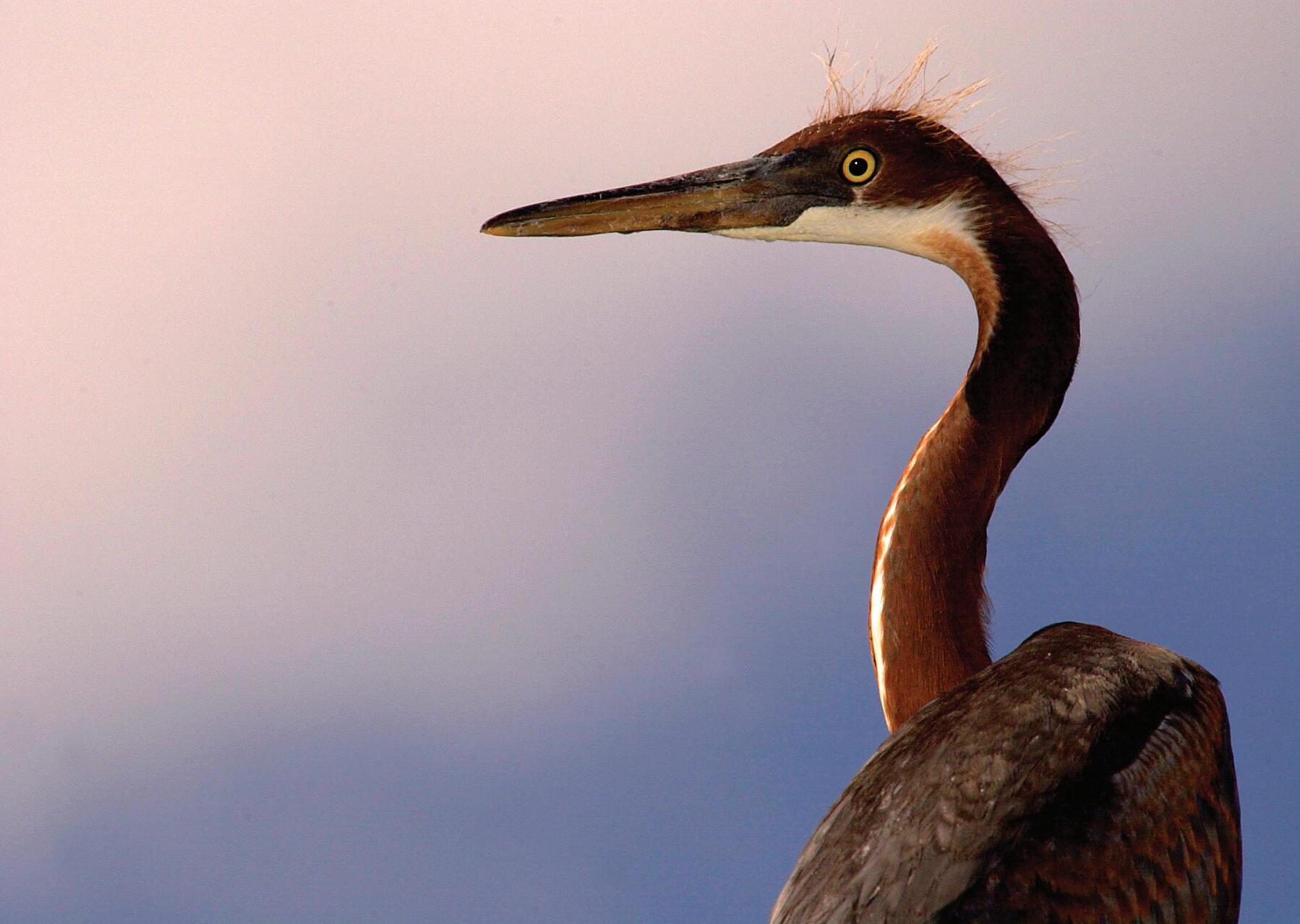

2025 SOUTH FLORIDA ENVIRONMENTAL REPORT HIGHLIGHTS
The South Florida Environmental Report (SFER) documents an important year of restoration, scientific and engineering accomplishments in the Kissimmee Basin, Lake Okeechobee, Everglades and South Florida coastal areas. The report also provides extensive peer reviewed research summaries, data analyses, financial updates and a searchable database of environmental projects. The report covers environmental information for Water Year 2024 (WY2024; May 1, 2023–April 30, 2024) and project budgetary and construction information for the South Florida Water Management District (SFWMD or District) for Fiscal Year 2024 (FY2024; October 1, 2023 –September 30, 2024). This year’s SFER Highlights also cover the many achievements and progress made over the past five years in accelerating key water quality improvements and Everglades restoration projects, in line with the Executive Order 19-12 (Achieving More Now for Florida’s Environment, January 2019) and Executive Order 23-06 (Achieving Even More Now for Florida’s Environment, January 2023). The full 3,125-page report is available at SFWMD.gov/SFER.
Water Year 2024 (May 1, 2023–April 30, 2024) v Fiscal Year 2024 (October 1, 2023–September 30, 2024)

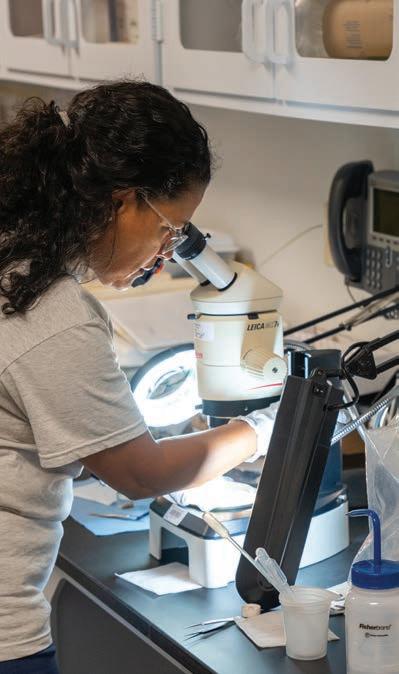
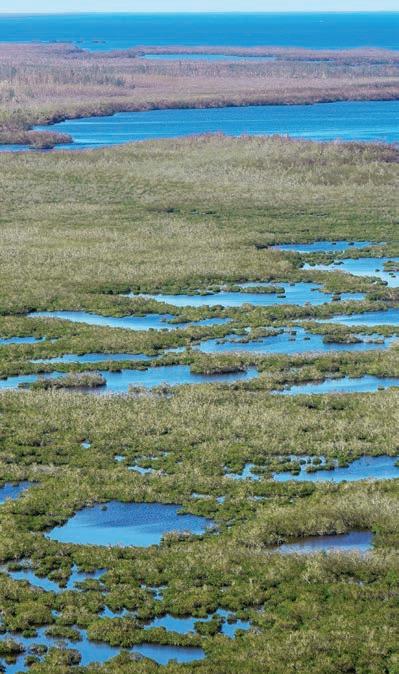
PROGRESS CONTINUES IMPLEMENTING EXECUTIVE
ORDERS 23-06 AND 19-12
Achieving Even More Now for Florida’s Environment – Executive Order Continues Momentum for Everglades Restoration and Water Quality
The South Florida Water Management District (SFWMD) continues to implement Executive Order 23-06 to carry on the significant progress for the resiliency and restoration of Florida’s water resources and to accelerate Everglades restoration and water quality projects.
On January 10, 2023, Governor Ron DeSantis signed Executive Order 23-06 (Achieving Even More Now for Florida’s Environment) to enhance ongoing efforts to expedite restoration projects and further advance the protection of Florida’s natural resources. The Executive Order called for the investment of $3.5 billion in Everglades restoration and water quality improvements over four years to protect our water resources and further restore America’s Everglades. The Governor’s announcement came exactly four years to the day after he signed Executive Order 19-12 (Achieving More Now For Florida’s Environment) that resulted in record environmental funding, expedited Everglades projects, and water quality improvements.
The SFWMD and the Florida Department of Environmental Protection (DEP) continue to accelerate critical Everglades restoration projects that protect our water resources and increase water storage north, south, east and west of Lake Okeechobee.
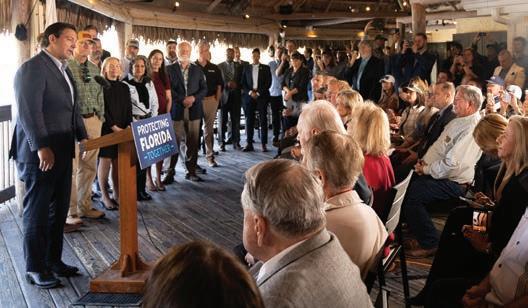
“Governor Ron DeSantis continues to lead the way to protect America’s Everglades and advance key Everglades restoration projects. Since 2019, when Governor DeSantis took office, the District has celebrated 75 project completions, groundbreakings, and other major milestones - the most in state history,” said SFWMD Governing Board Chair Chauncey Goss “Restoring America’s Everglades is the world’s largest ecosystem restoration project, and we are seeing real results and record hydration levels in the Everglades. Bottom lineOur investments are working. Thank you, Governor DeSantis for continuing to drive historic momentum through state investments. This record-breaking commitment for Everglades restoration and water quality improvements will enhance the quality of life for millions of South Floridians.”
HISTORIC MOMENTUM CONTINUES ON THE EAA RESERVOIR PROJECT
Progress Continues for Sending More Clean Water South and Reducing Harmful Discharges
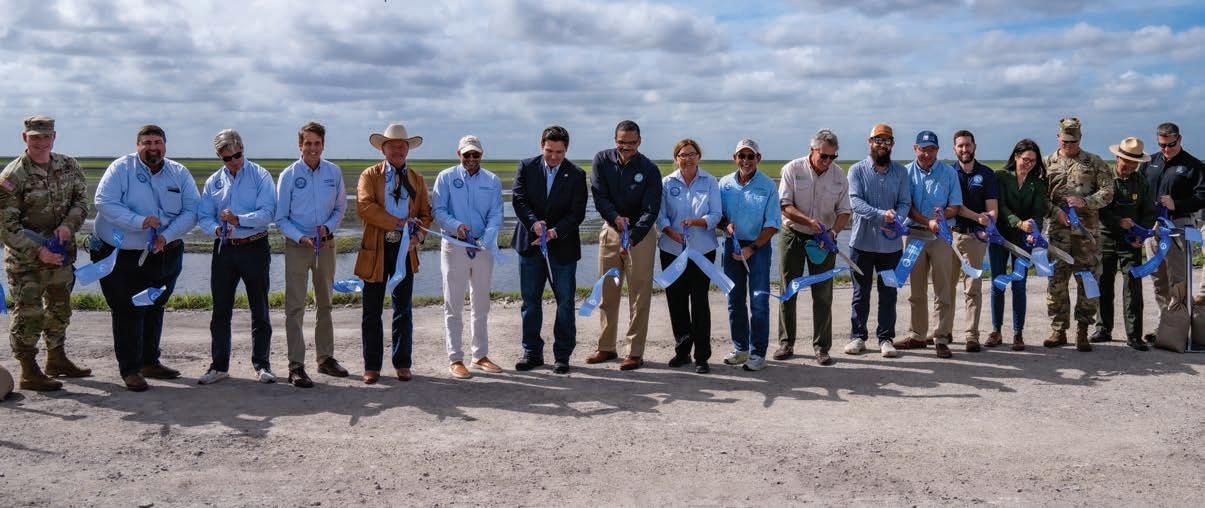
Major components of the Everglades Agricultural Area (EAA) Reservoir Project continue to advance and will help restore the natural flow of clean water south to where it is needed most, while reducing harmful discharges to the St. Lucie River, the Caloosahatchee River and the Lake Worth Lagoon.
Governor DeSantis joined the SFWMD at a ribbon cutting ceremony on January 25, 2024 to begin filling the EAA Reservoir Project’s Stormwater Treatment Area (STA), marking a historic milestone for our River of Grass and the protection of Florida’s water resources.
The EAA Reservoir is a critical component of Everglades restoration and will help reduce harmful discharges to the St. Lucie and Caloosahatchee estuaries and improve the resiliency of our water resources.
The project will provide many ecological benefits, including nourishing the Everglades, replenishing Florida’s aquifers and supporting the health of Florida Bay.
The SFWMD Governing Board expedited this important project in 2019 after Governor DeSantis signed Executive Order 19-12.
75 Everglades projects have been completed, broken ground or hit a major milestone since January 2019. These projects are making a measurable difference for water quality and the ecological health of South Florida’s natural resources.
EAA Reservoir STA Ribbon Cutting on Jan. 25, 2024. L-R: USACE - Jacksonville District Col. James Booth, SFWMD Board Members Ben Butler and Jay Steinle, SFWMD Director Drew Bartlett, SFWMD Board Member “Alligator Ron” Bergeron, SFWMD Chairman Chauncey Goss, Governor Ron DeSantis, Former DEP Secretary Shawn Hamilton, SFWMD Board Members Charlette Roman and Charlie Martinez, Everglades Foundation Chairman Carlos de la Cruz, Jr., Captains for Clean Water Co-Founder and Executive Director Capt. Daniel Andrews, Everglades Foundation CEO Eric Eikenberg, Florida’s Chief Resilience Officer Dr. Wes Brooks, Former U.S. Department of the Interior Assistant Secretary Shannon Estenoz, USACE - South Atlantic Division Brig. Gen. Daniel Hibner, Everglades and Dry Tortugas National Parks Superintendent Pedro Ramos and FWC Director Roger Young.
Governor Ron DeSantis announces Executive Order 23-06 in Bonita Springs on Jan. 10, 2023.
2025 SOUTH FLORIDA ENVIRONMENTAL REPORT – Highlights
2025 IS THE YEAR OF MAJOR CERP PROJECTS COMING ONLINE
CALOOSAHATCHEE (C-43) RESERVOIR BEGINS INITIAL OPERATIONS THIS YEAR
The Caloosahatchee (C-43) Reservoir Project in Hendry County will begin initial operations in the summer of 2025! On December 19, 2023, the SFWMD joined federal, state and local officials to celebrate the completion of a new, massive pump station that will move water from the Caloosahatchee River (C-43 Canal) into an 18-square-mile reservoir and reduce harmful flows of water from reaching the downstream Caloosahatchee Estuary.
The Caloosahatchee (C-43) Reservoir provides water storage and supports healthy salinity levels in the Caloosahatchee Estuary. It will reduce harmful flows of water to the Caloosahatchee Estuary from Lake Okeechobee and the local watershed during the wet season and provide beneficial freshwater flows to the estuary during the dry season. It will hold approximately 170,000 acre-feet of water, which is around 55 billion gallons. This means that both the east coast and the west coast will have major water storage projects that have completed construction.
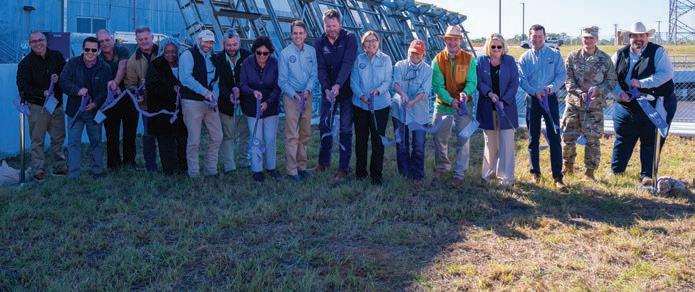
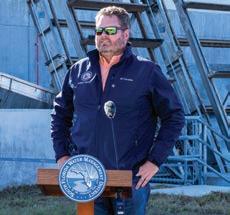
PICAYUNE STRAND RESTORATION PROJECT FINISHES THIS YEAR AND BRINGS MAJOR ENVIRONMENTAL BENEFITS
On May 31, 2024, the SFWMD and the USACE celebrated the completion of a key component of the Picayune Strand Restoration Project in Southwest Florida, the plugging of the Faka Union Canal.
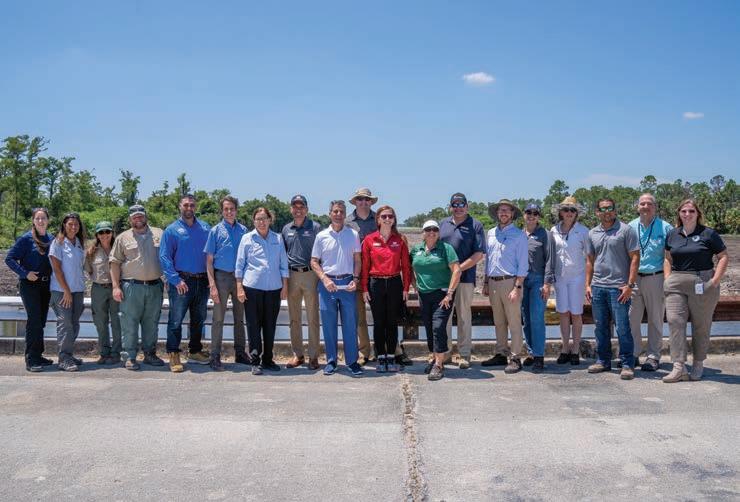
District Deputy Engineer for Programs and Project Management Howard Gonzalez, Jr., USACEJacksonville District Project Manager Stephen Baisden, Everglades Foundation Biogeochemist Paul Julian, USACE - Jacksonville District Ecosystem Branch Chief Eva Velez, Conservancy of Southwest Florida Chief Programs Officer Michele Arquette-Palermo, Corkscrew Swamp Sanctuary Director Keith Laakkonen, Audubon Western Everglades Executive Director Andy Wells-Bean, Audubon Western Everglades Board Member Meredith Budd, Everglades Foundation Vice-Chair Ellin Goetz, USACE - Jacksonville District Project Engineer/ Superintendent, Operations Division Felix Colon Cardona, Rookery Bay National Estuarine Research Reserve Southwest Florida Program Administrator Jeff Carter and DEP South District Public Information Officer Brooke Keck.
FLOWING WATER INTO WETLANDS - BISCAYNE BAY COASTAL WETLANDS PROJECT IS NEAR COMPLETION
The Biscayne Bay Coastal Wetlands Project is Phase 1 of a Comprehensive Everglades Restoration Plan (CERP) effort that redistributes freshwater flows to Biscayne Bay to rehydrate and improve coastal habitat. The project works with existing infrastructure and builds new features to mimic more natural flow patterns across freshwater and saltwater wetlands to the nearshore of Biscayne Bay.
The SFWMD, USACE and Miami-Dade County along with federal, state and local officials will celebrate the completion of the Biscayne Bay Coastal Wetlands Project by the end of 2025. The project will improve the health of Biscayne Bay and will aid in wetland rehydration – building coastal resiliency and improving water quality in this area of Miami-Dade County. The project is made up of three components: Deering Estate, Cutler Wetlands and L-31 East Flow Way. Deering Estate is complete and operational. Cutler Wetlands is under construction and will be complete by the end of 2025. The L-31 East Flow Way is under construction and will be complete by the end of 2025.
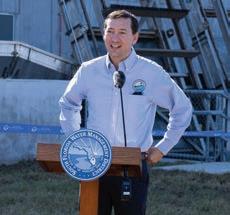
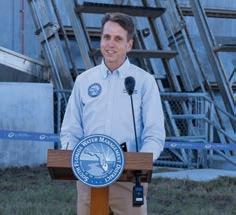
The Picayune Strand Restoration Project restores the natural water flow across 85 square miles in western Collier County that were drained in the early 1960s in anticipation of extensive residential development. The restoration involves plugging 48 miles of canals, removing 260 miles of crumbling roads, and constructing three major pump stations, all of which will restore more than 55,000 acres of natural habitat.
The plugging of the Faka Union Canal is one of the final project components. Three out of the four canals are now plugged. In addition, all three Picayune pump stations, along with the Miller Tram and road removal, are now complete.
The project will rehydrate drained wetlands in the Picayune Strand State Forest, enhance habitat for fish and wildlife, and restore the area’s natural sheet flow. The project will also improve flows of water into Collier Seminole State Park, Ten Thousand Islands National Wildlife Refuge and the Rookery Bay National Estuarine Research Reserve.
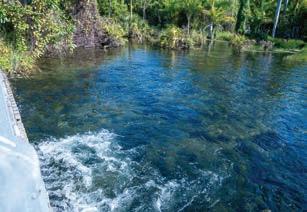
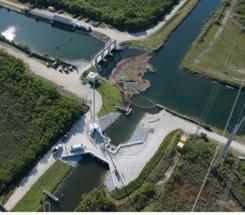

C-43 Reservoir Pump Station Ribbon Cutting on Dec. 19, 2023. L-R: Hendry County Commissioner Ramon Iglesias, LaBelle Commissioner Hugo Vargas, Hendry County Commissioner Emory “Rowdy” Howard, Hendry County Vice Chair Mitchell Wills, Hendry County Chairperson Emma Byrd, SFWMD Chairman Chauncey Goss, Rep. Adam Botana, Florida Senate President Kathleen Passidomo, SFWMD Director Drew Bartlett, Sen. Jonathan Martin, SFWMD Board Member Charlette Roman, Sanibel Councilwoman Holly Smith, Hendry County Commissioner Karson Turner, LaBelle Mayor Julie Wilkins, DEP Deputy Secretary Adam Blalock, USACE - Jacksonville District Maj. Cory Bell and SFWMD Board Member Ben Butler.
Senator Jonathan Martin at the C-43 Reservoir Pump Station Ribbon Cutting.
DEP Deputy Secretary Adam Blalock at the C-43 Reservoir Pump Station Ribbon Cutting.
SFWMD Director Drew Bartlett at the C-43 Reservoir Pump Station Ribbon Cutting.
Celebrating the completion of the plugging of the Faka Union Canal on May 31, 2024. L-R: SFWMD Project Manager Amanda McKenzie, SFWMD Environmental Project Manager Mary Fesmire, Florida Forestry Service Rangers Brenda Stelzer and Michael Weston, SFWMD Former Chief Communications and Public Policy Officer Taniel Koushakjian, SFWMD Director Drew Bartlett, SFWMD Board Member Charlette Roman, USACE - Jacksonville
Cutler Wetlands.
Downstream of Deering Estate Pump Station Spreader.L-31 Flow Way Pump Station S-709.
2025 SOUTH FLORIDA ENVIRONMENTAL REPORT
FIXING SALINITY LEVELS IN FLORIDA BAY
Everglades restoration ensures more natural flows into and through the Everglades.
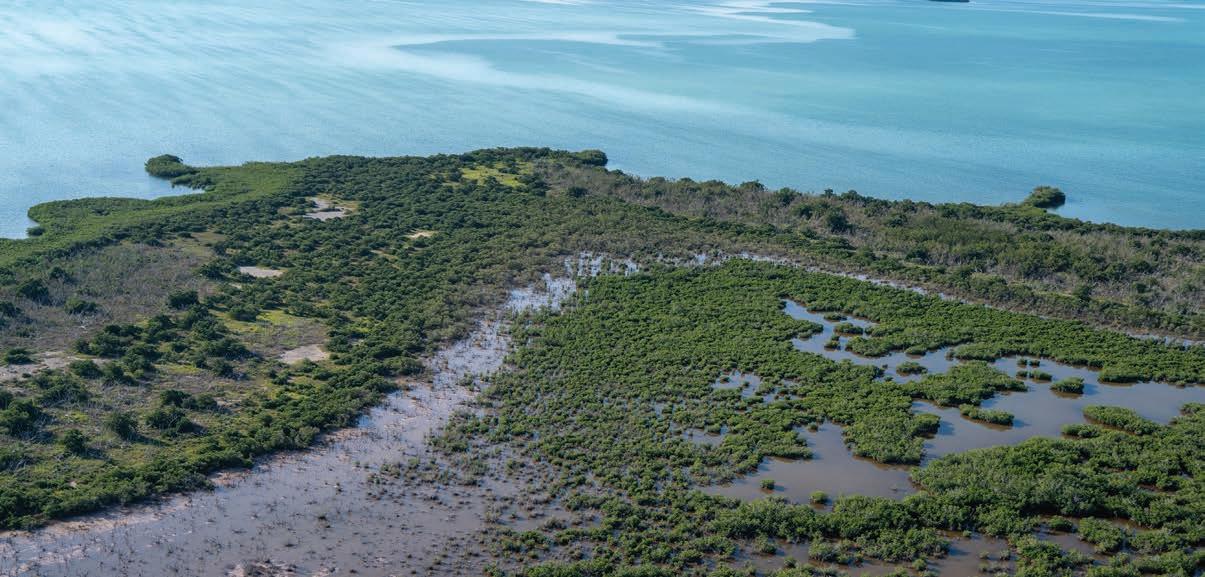
Record Hydration in the Everglades
End of the wet season current water depths in two key locations, Shark River Slough and Taylor Slough, demonstrate that restoration projects and operations work well together to nourish the Everglades and send water south to support the health of Florida Bay.
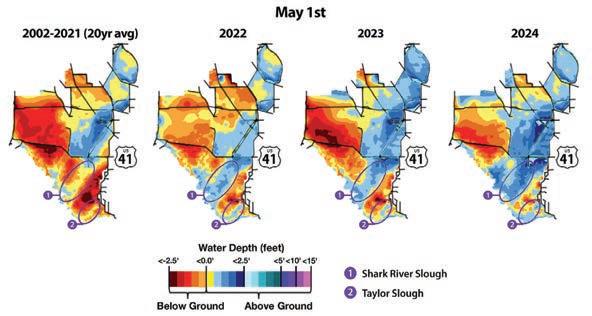
Salinity Levels in Florida Bay

Salinity Levels in Florida Bay Hit Goals
Record water flows and water depths in the Everglades coupled with rainfall demonstrated that restoration can support healthy salinity levels in Florida Bay. Balanced salinity supports sea grass and spawning fish.
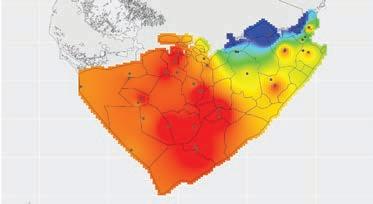
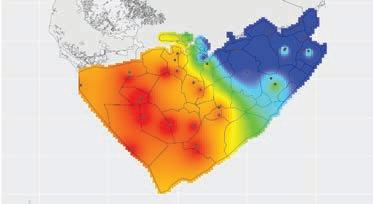

EVERGLADES RESTORATION IS WORKING TO PROTECT SOUTH FLORIDA’S WATER RESOURCES
Recent data demonstrate that Everglades restoration is working, proving increased investments and continued momentum are successfully ensuring more natural flows through the Everglades and more balanced salinity levels in Florida Bay.
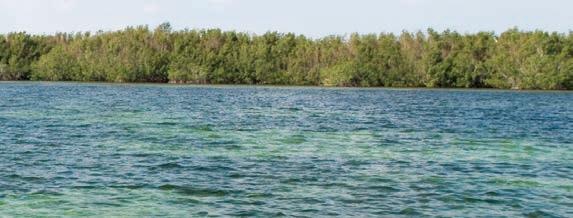
WHILE
THE EVERGLADES IS THE “RIVER OF GRASS” FLORIDA BAY IS THE “MEADOW OF GRASS”
The seagrass meadows of Florida Bay make up the largest continuous seagrass bed on Earth. Along with the mangrove forests lining the coast, these seagrass meadows are the reason Florida Bay can support such a great diversity and quantity of life. Every time Florida Bay experiences an extreme hypersalinity event, seagrass dies. Most of the issues in Florida Bay are tied to out-of-balance salinity.
Everglades restoration is working to prevent high salinity and protect seagrass by restoring freshwater flow into the Everglades. Right now, we are experiencing more balanced salinity levels in the eastern and central portions of Florida Bay where we have focused a majority of our efforts.
In the four years since the Combined Operational Plan was implemented, water flow increased into Everglades National Park during the dry season, a time when the park often receives little freshwater.
Adequate freshwater inflow from the Everglades coupled with rainfall is important to maintaining a delicate-yet-critical salinity balance in Florida Bay, which safeguards the health of vital seagrasses. The result of this additional freshwater helps prevent hypersalinity events.
Florida Bay, Everglades National Park.
Florida Bay, Everglades National Park.
CONSTRUCTION BEGINS ON FIRST MAJOR FEATURE OF THE WESTERN EVERGLADES RESTORATION PROJECT
Another Momentous Step for Everglades Restoration and the Resiliency of Water Resources
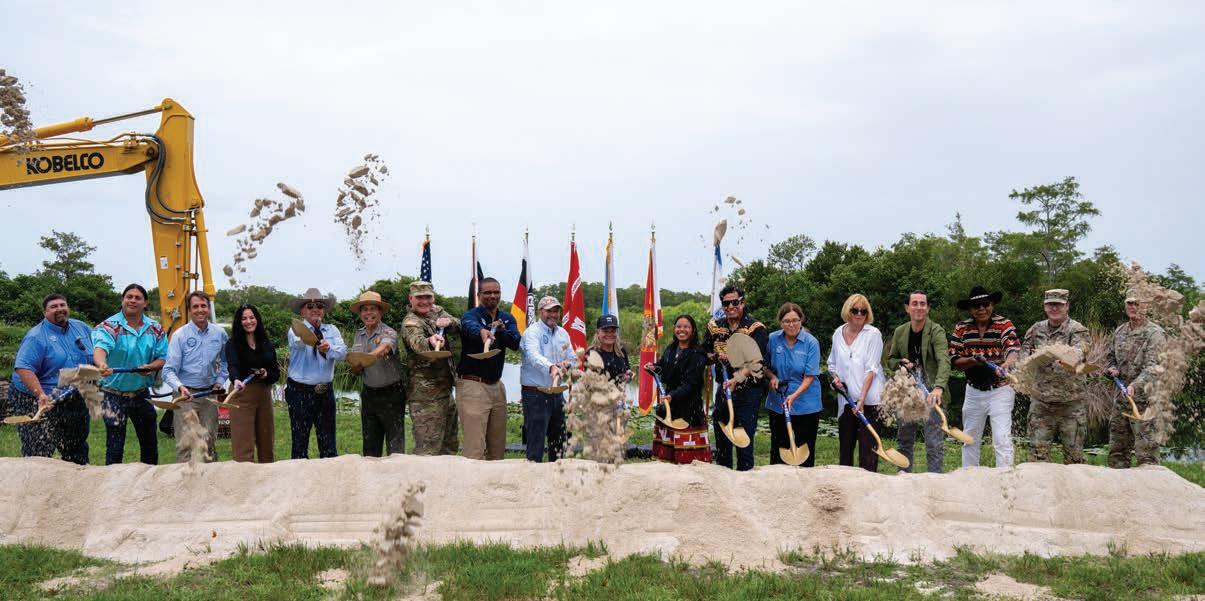
On July 10, 2024, the South Florida Water Management District (SFWMD), the U.S. Army Corps of Engineers - Jacksonville District (USACE), the Florida Department of Environmental Protection (DEP), the Miccosukee Tribe of Indians of Florida and the Seminole Tribe of Florida celebrated the groundbreaking for the first major feature of the Western Everglades Restoration Project (WERP) the L-28 South Culverts.
The goal of WERP is to improve the quantity, quality, timing and distribution of water in the western Everglades in an effort to re-establish ecological connectivity and restore low nutrient conditions.
S-191 BASIN SURFACE RUNOFF PHOSPHORUS REMOVAL PROJECT
Using innovative technology that is cost-effective and reliable to remove phosphorus from the C-59 Canal before it reaches Lake Okeechobee.
The S-191 Basin is located within the Taylor Creek/Nubbin Slough subwatershed, one of the priority subwatersheds with high total phosphorus loading rates identified in the Northern Everglades and Estuaries Protection Program.
The South Florida Water Management District (SFWMD) selected the S-191 Basin for implementation of a pay-forperformance project to remove total phosphorus from basin runoff. The location was selected based on historical water quality trends.
Excessive nutrient loads are a primary driver of harmful algal blooms in Lake Okeechobee. Identification and implementation of cost-effective, long-term solutions to reduce nutrient loadings from hot spots is a priority for the SFWMD and the State of Florida. It has also been recommended by the Blue-Green Algae Task Force.
This project will help reduce total phosphorus loads from the Lake Okeechobee Watershed and will help achieve the Total Maximum Daily Load (TMDL) of 105 metric tons per year.
The L-28 South Culverts will restore and reconnect Water Conservation Area 3A with Big Cypress National Preserve and Lostmans Slough. This project is located in an area of South Florida where Water Conservation Area 3, Big Cypress National Preserve and Everglades National Park as well as the Miccosukee Alligator Alley Reservation all come together.
The culverts will improve the timing and distribution of water to re-establish ecological connectivity and restore hydrologic conditions in Big Cypress National Preserve and western Everglades National Park.
Process Description
u PRE-TREATMENT: Simple filtration removes particulates, including phosphorus-containing particulates, from the water to prevent fouling of downstream process equipment.
u PHOSPHORUS REMOVAL: Soluble phosphorus is removed utilizing a proprietary process that creates a particulate phosphorus compound.
u POST-TREATMENT: Similar to pre-treatment, simple filtration is used again to remove phosphorus-containing particulates.
u DEWATERING AND DISPOSAL: Ancillary equipment is used to dewater and consolidate the two types of solids collected by both the pre- and post-treatment filters. Once fully dewatered, the solids are hauled away for landfill disposal.
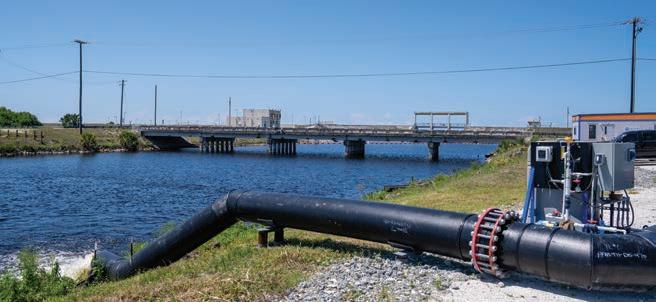
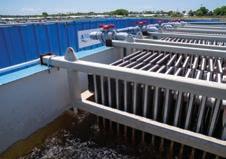
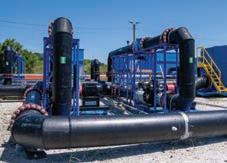
Western Everglades Restoration Project-South Features L-28 Culvert Groundbreaking Ceremony on July 10, 2024. L-R: SFWMD Board Member Ben Butler, Miccosukee Tribe of Indians of Florida Chief of Staff Curtis Osceola, SFWMD Director Drew Bartlett, Bergeron Everglades Foundation Vice President Diamond Bergeron, SFWMD Board Member “Alligator Ron” Bergeron, Everglades and Dry Tortugas National Parks Superintendent Pedro Ramos, USACE - Jacksonville District Col. James Booth, Former DEP Secretary Shawn Hamilton, SFWMD Chairman Chauncey Goss, Rep. Lauren Melo, Miccosukee Tribe of Indians of Florida Student Business Council Chairwoman Violet Osceola, Miccosukee Tribe of Indians of Florida Chairman Talbert Cypress, SFWMD Board Member Charlette Roman, Everglades Foundation Board of Directors Vice Chair Ellin Goetz, Seminole Tribe of Florida Paul Backhouse, Miccosukee Tribe of Indians of Florida Lawmaker, Business Council Petties Osceola, Jr., USACE - Jacksonville District Col. Brandon Bowman and USACE - Jacksonville District Maj. Cory Bell.
2025 SOUTH FLORIDA ENVIRONMENTAL REPORT
EVERGLADES RESTORATION PROJECTS




Caloosahatchee River
Kissimmee River Restoration Headwater Lakes
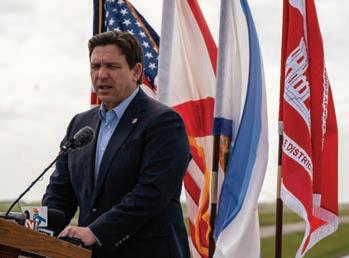
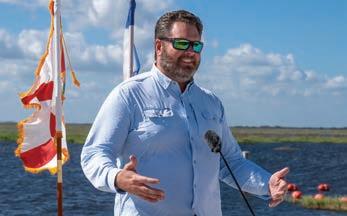
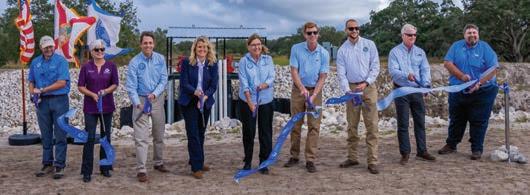
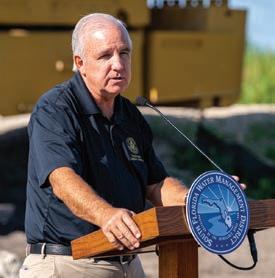
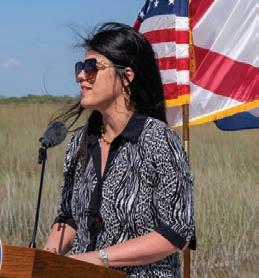
Congressman Carlos Gimenez at the CEPP New Water Seepage Barrier Wall (8.5 Square Mile Area) Groundbreaking Ceremony on Aug. 20, 2021.
4 Indicates these projects have been completed.
Senator Jonathan Martin at the C-139 Flow Equalization Basin Ribbon Cutting Ceremony on Nov. 13, 2024.
Senator Ana Maria Rodriguez at the CEPP New Water Seepage Barrier Wall (8.5 Square Mile Area) Ribbon Cutting Ceremony on April 4, 2024.
El Maximo Ranch Northern Everglades Water Quality Project Ribbon Cutting Ceremony on Dec. 16, 2024.
L-R: SFWMD Chairman Chauncey Goss, Osceola County Commissioner Cheryl Grieb, SFWMD Director Drew Bartlett,
Board Member Charlette Roman, President of
Board Member Ben Butler.
CELEBRATING THE COMPLETION OF THE CONSTRUCTION PHASE OF THE EVERGLADES
RESTORATION STRATEGIES PROJECT
In 2012, the State of Florida and the U.S. Environmental Protection Agency (EPA) reached a consensus on new restoration strategies for further improving water quality in America’s Everglades. These strategies expand water quality improvement projects to help achieve the water quality standard for phosphorus levels established for the Everglades, ending decades of litigation. Under these strategies, the South Florida Water Management District (SFWMD) and the State of Florida funded a regional water quality plan to expand water treatment and storage projects for the Greater Everglades Ecosystem.
RESTORATION STRATEGIES INCLUDE:
13 Projects
More than 6,000 acres of constructed wetlands
Over 115,000 acre-feet of water storage
The storage areas capture runoff during storm events and provide a more steady flow of water to the STAs, helping to maintain the plants.
A robust science plan ensures the continued research and monitoring to improve and optimize the performance of constructed wetlands. See Restoration Strategies Science Studies on Page 16.
RESTORATION STRATEGIES KEY PROJECTS MAP
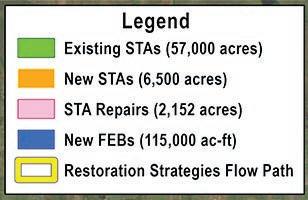
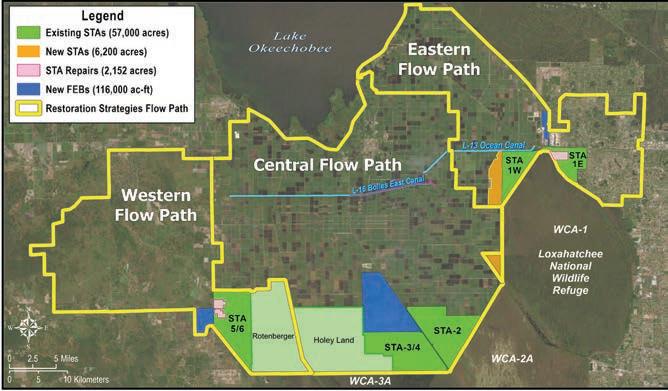

The suite of projects that are part of Restoration Strategies are mostly made up of STAs and FEBs
WHAT IS AN STA?
STAs are large, constructed wetlands with emergent and aquatic plants that remove and store nutrients.
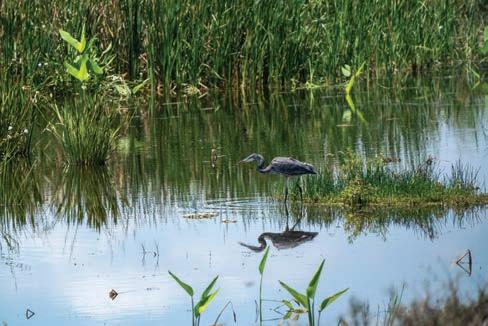
WHAT IS AN FEB?
A construction storage feature used to capture and temporarily store stormwater for delivery to STAs to improve nutrient retention. STA-1 West Expansion.
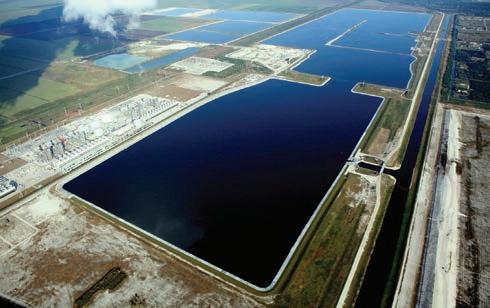
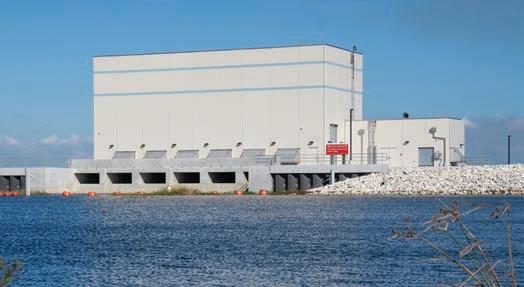
BUILDING ON WATER QUALITY PROGRESS
A ribbon cutting was held on November 13, 2024 for the final Restoration Strategies project, the C-139 FEB, an 11,000 acre-foot shallow reservoir in Hendry County, that will store local basin runoff and control the flow of water to the adjacent Stormwater Treatment Area 5/6. This project will help improve the performance of STA-5/6, removing nutrients from stormwater and improving the quality of the water before it flows south to the Everglades.
C-139 Flow Equalization Basin Ribbon Cutting Ceremony on Nov. 13, 2024. L-R: SFWMD Governing Board Member Ben Butler, Miccosukee Tribe of Indians of Florida Deputy General Counsel Edward Ornstein, Acting Executive Director of Operations of the Seminole Tribe of Florida Tina Osceola, SFWMD Governing Board Member “Alligator Ron” Bergeron, Environmental Protection Agency Acting Regional Administrator Jeaneanne Gettle, SFWMD Governing Board Member Charlette Roman, SFWMD Director Drew Bartlett, SFWMD Governing Board Chairman Chauncey Goss, Sen. Jonathan Martin, Hendry County Commissioner Karson Turner and DEP Deputy Secretary Adam Blalock.
C-139 Flow Equalization Basin.
Massive Achievement Provides More Clean Water for America’s Everglades
EXPEDITING PROGRESS TO SEND MORE CLEAN WATER SOUTH
SFWMD Governing Board Approves Two Key Projects
Sending more clean water south remains a top priority for the SFWMD. On December 12, 2024, the SFWMD’s Governing Board unanimously approved two projects to expedite progress to send more clean water south. These projects provide opportunities to allow more water to be directed south to the Central Everglades and into Everglades National Park and Florida Bay.
CAPE SABLE SEASIDE SPARROW
To mitigate for Everglades restoration delays associated with management of the critically endangered Cape Sable Seaside Sparrow, the SFWMD is supporting an interagency effort to implement a conservation breeding program to help with the recovery of this species, while we continue to expedite Everglades restoration.
The pilot project by the Fish and Wildlife Foundation of Florida entails building enclosures and other necessary structures for the propagation and managed care of the Cape Sable Seaside Sparrow for reintroduction and wild population augmentation.
S-355 WEST STRUCTURE
The SFWMD is taking over construction of a critical feature of the Central Everglades Planning Project (CEPP) South at the request of the U.S. Army Corps of Engineers. This critical feature is known as the S-355W structure and it paves the way for the Blue Shanty Flow Way, which will help restore the balance of water flows between the Central Everglades, Everglades National Park and Florida Bay. The SFWMD will begin construction of this project in 2025 and will have the project completed earlier than originally planned.
RESTORATION EFFORTS IN AMERICA’S EVERGLADES ARE DELIVERING REAL RESULTS!
CEPP South, removing Old Tamiami Trail, completing the Taylor Slough Flow Improvement Project and the completion of S-333 North Structure are sending billions of gallons of clean water south through the Everglades and into Florida Bay.
The new seepage wall keeps water inside Everglades National Park and out of nearby communities. The bridging of Tamiami Trail will restore historic flows of water to the Everglades.
The C-111 South Dade Project restores natural hydrologic conditions in Taylor Slough and the eastern portion of Everglades National Park. The C-111 South Dade Project also works in concert with the infrastructure built as part of the Modified Water Deliveries to Everglades National Park.
Because of all of this new infrastructure, we’ve been able to send more water into Florida Bay during the dry season, which balances the salinity in Florida Bay to prevent seagrass die off. Investments are working. We are getting the job done.
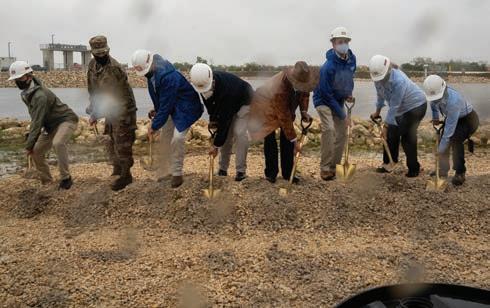
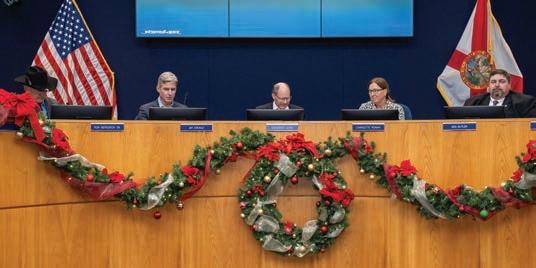
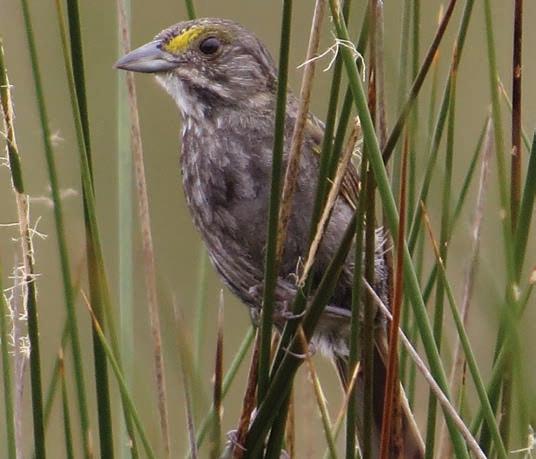
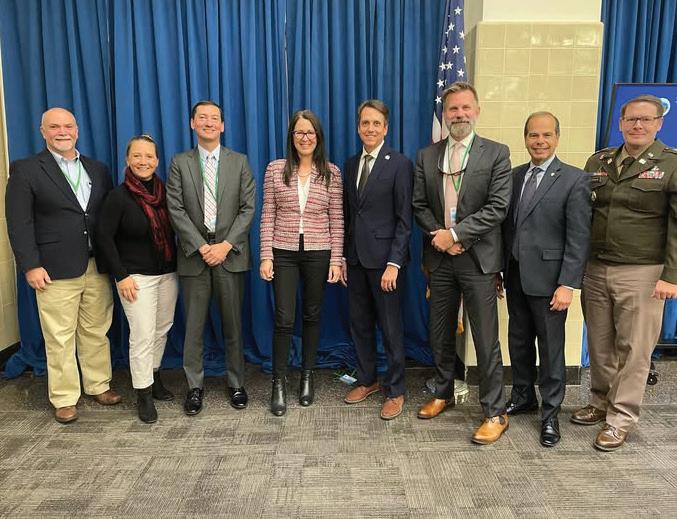
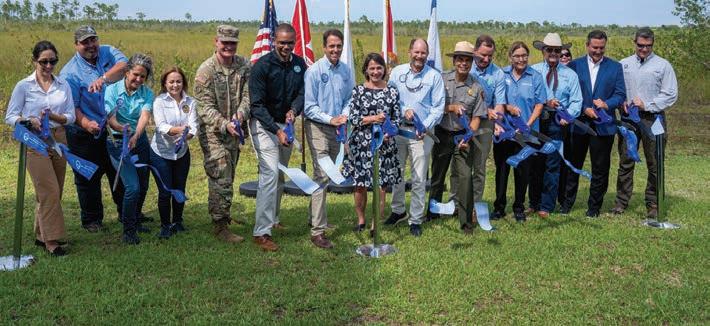
South Florida Ecosystem Restoration Task Force Meeting in Washington, D.C. on Dec. 5, 2024. L-R: U.S. Fish and Wildlife Service State Program Supervisor Larry Williams, Audubon Florida Director of Everglades Policy Kelly Cox, DEP Deputy Secretary Adam Blalock, Former U.S. Department of the Interior Assistant Secretary Shannon Estenoz, SFWMD Director Drew Bartlett, Miccosukee Tribe of Indians of Florida Chief Sustainability Officer Kevin Cunniff, Superintendent of Everglades and Dry Tortugas National Parks Pedro Ramos and USACE - Jacksonville District Col. Brandon Bowman.
Taylor Slough Ribbon Cutting on May 30, 2023. L-R: National Parks Conservation Association Everglades Restoration Senior Program Manager Cara Capp, SFWMD Board Member Ben Butler, Former SFWMD Board Member Jacqui Thurlow-Lippisch, Former Miami-Dade County Chief Bay Officer Irela Bague, USACE - Jacksonville District Col. James Booth, Former DEP Secretary Shawn Hamilton, SFWMD Director Drew Bartlett, Former U.S. Dept. of the Interior Assistant Secretary Tanya Trujillo, SFWMD Chairman Chauncey Goss, Superintendent of Everglades and Dry Tortugas National Parks Pedro Ramos, Everglades Foundation CEO Eric Eikenberg, SFWMD Board Members Charlette Roman and “Alligator Ron” Bergeron, Miami-Dade County Commissioner Sen. René Garcia and FWC Director Roger Young.
S-333 North Ceremony on Oct. 21, 2020. L-R: SFWMD Board Member Jay Steinle, USACE -Jacksonville District Col. Andrew Kelly, SFWMD Chairman Chauncey Goss, SFWMD Vice Chairman Scott Wagner, SFWMD Board Member “Alligator Ron” Bergeron, SFWMD Director Drew Bartlett, SFWMD Board Member Charlette Roman and Former SFWMD Board Member Jacqui Thurlow-Lippisch.
SFWMD Governing Board Meeting on Dec. 12, 2024. L-R: SFWMD Board Members “Alligator Ron” Bergeron and Jay Steinle, SFWMD Chairman Chauncey Goss, SFWMD Board Members Charlette Roman and Ben Butler.
Cape Sable Seaside Sparrow. The SFWMD remains laser focused on sending water south and
2025 SOUTH FLORIDA ENVIRONMENTAL REPORT –
DISPERSED WATER MANAGEMENT PROJECTS
The SFWMD's continued commitment to proactively manage the regional water management system incorporates partnerships with private landowners to operate Dispersed Water Management (DWM) Projects including the Brighton Valley DWM, Bluefield Grove Water Farm, Scott Water Farm, the ALJO Four Corners Rapid Infiltration Project, the Partin Family Ranch Project, and El Maximo Ranch Northern Everglades Water Quality Project. These projects provide water storage on private property by holding stormwater or even pulling excess water from a regional canal system. In addition, these projects also help improve water quality and enhance plant and wildlife habitat. All six projects below plus an additional 18 projects are complete and operational.
Brighton Valley DWM Project
The SFWMD and Lykes Bros. Inc. celebrated the completion of the Brighton Valley DWM Project in Highlands County on September 17, 2020. This 8,100-acre project pumps excess water from the C-41A Canal and is estimated to store more than 11,000 acre-feet of water per year and remove approximately 3 metric tons of phosphorus and 27 metric tons of nitrogen annually before it enters Lake Okeechobee.
During its first three years of operation, the project continued to show improved results. In WY2024, the project stored approximately 46,000 acre-feet and removed 5 metric tons of total phosphorus and approximately 77 metric tons of total nitrogen.
Bluefield Grove Water Farm
The SFWMD and Evans Properties, Inc. celebrated the completion of the Bluefield Grove Water Farm in St. Lucie County on August 18, 2021. It can capture over 9 billion gallons of regional stormwater before it enters the St. Lucie Estuary and makes a difference in water quality.
This 6,100-acre water farm pumps excess water from the C-23 Canal and is estimated to store more than 28,000 acre-feet of water per year and removes approximately 5 metric tons of phosphorus and 25 metric tons of nitrogen annually from the C-23 Basin. In WY2024, the project stored approximately 42,000 acre-feet and removed approximately 14 metric tons of total phosphorus and approximately 80 metric tons of total nitrogen.
Scott Water Farm
The SFWMD and Evans Properties, Inc., along with many state and local partners, celebrated the completion of the Scott Water Farm in Indian River and Okeechobee counties on February 11, 2022. The project can store more than 9 billion gallons of local stormwater runoff and was designed to reduce harmful estuary discharges.
Scott Water Farm is estimated to store more than 29,000 acre-feet of water per year. The water farm retains onsite rainfall and pump water from the C-25 Canal and stores it on approximately 7,500 acres of privately-owned land. The project has the capability to reduce more than 3 metric tons of phosphorus per year and over 13 metric tons of nitrogen per year. In WY2024, the project stored approximately 33,000 acre-feet and removed approximately 12 metric tons of total phosphorus and approximately 65 metric tons of total nitrogen. This project is a joint effort between the SFWMD, DEP, Florida Department of Agriculture and Consumer Services (FDACS), and Evans Properties, Inc.
ALJO Four Corners Rapid Infiltration Project
The SFWMD, DEP, FDACS, and ALJO Groves, L.C., celebrated the completion of the ALJO Four Corners Rapid Infiltration Project in Lee County on July 25, 2023.
The project stores excess water from the local watershed to help support the balance of fresh and salt water in the Caloosahatchee Estuary. It will increase water and nutrient retention by operating a 22-acre rapid infiltration area, 97-acre seepage area, 3 inflow pump stations and associated water control structures and ditch improvements. In WY2024, the project stored approximately 23,000 acre-feet and removed approximately 4 metric tons of total phosphorus and approximately 40 metric tons of total nitrogen.
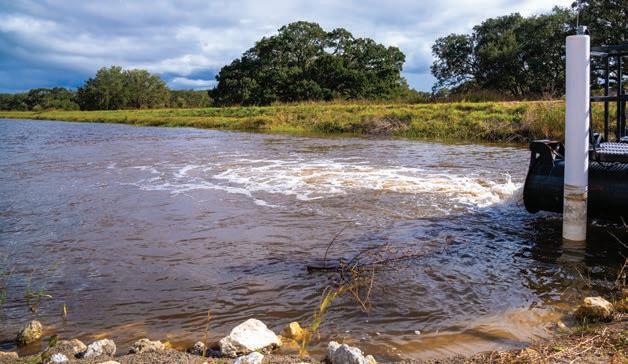
El Maximo Ranch Northern Everglades Water Quality Project
The SFWMD, DEP, FDACS, and Garcia Land Management, LLC, celebrated the completion of the El Maximo Ranch Northern Everglades Water Quality Project in Osceola County on December 16, 2024.
This regional water quality improvement effort is expected to remove over two metric tons of total phosphorus and seven metric tons of total nitrogen per year before it reaches Lake Okeechobee. The project diverts water from the Kissimmee River and Blanket Bay Slough for treatment on approximately 7,000 acres of privately-owned land. It consists of four pump stations, 19 water control structures and more than 27 miles of berms.
Partin Family Ranch Dispersed Water Storage and Management Project
The SFWMD and Doc Partin Ranch, Inc. celebrated the completion of the Partin Family Ranch Dispersed Water Storage and Management Project in Osceola County on September 16, 2024. The project is estimated to store over one billion gallons of water per year and is anticipated to remove 11,000 pounds of total nitrogen per year and 800 pounds of total phosphorus per year.
The project spans over 3,000 acres and is located in an area that has experienced heavy flooding during major weather events in the past. It is situated to provide relief for the local system during future high rainfall events. By retaining direct rainfall and stormwater runoff, the project prevents excess water from entering Lake Okeechobee through the regional canal system.
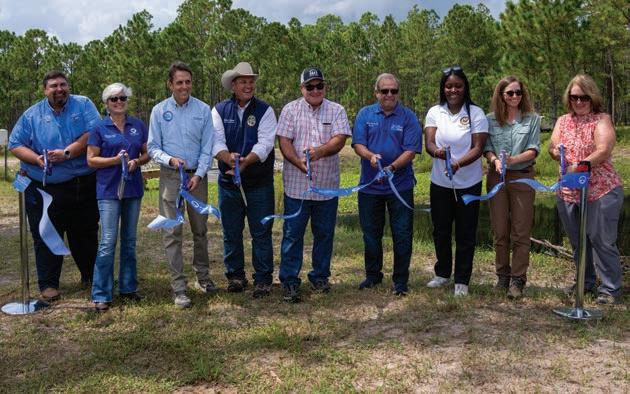
Partin Family Ranch Dispersed Water Storage and Management Project Ribbon Cutting on Sept. 16, 2024.
L-R: SFWMD Board Member Ben Butler, Osceola County Commissioner Cheryl Grieb, SFWMD Director Drew Bartlett, Osceola County Commissioner Ricky Booth, Partin Family Ranch John Partin, City of St. Cloud Mayor Nathan Blackwell, Stanassia Sammy, Congressman Darren Soto‘s Office, Archbold Biological Station Research Biologist Elizabeth Boughton and Rachel Barnes, Representative Jennifer Canady’s Office.
El Maximo Ranch Northern Everglades Water Quality Project in Osceola County.
CEPP NEW WATER SEEPAGE BARRIER WALL PROJECT
Completion of Underground Seepage Barrier Wall Supports Everglades Restoration and Mitigates Flooding
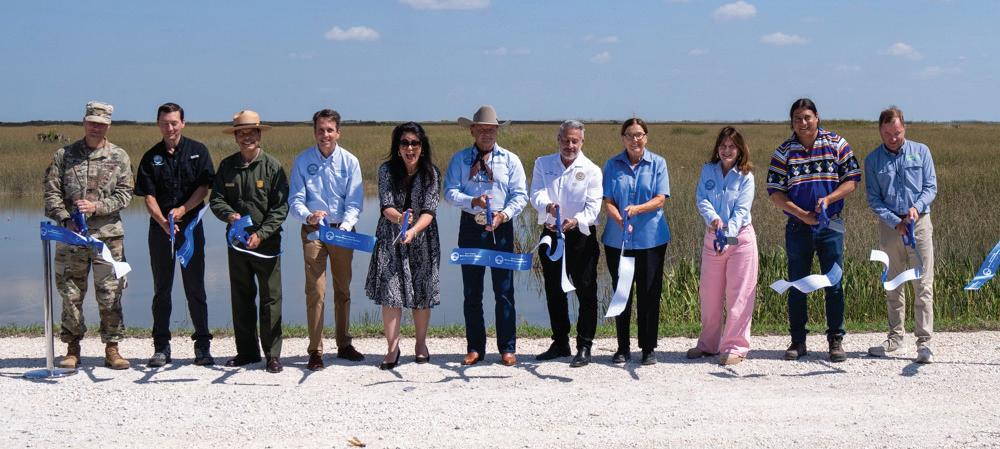
On April 24, 2024, the SFWMD and the USACE celebrated the completion of the Central Everglades Planning Project (CEPP) New Water Seepage Barrier Wall Project in Miami-Dade County, which extends the successful underground wall that was built as part of the 8.5 Square Mile Area Seepage Wall Project.
The SFWMD completed the 2.3-mile first phase of the wall in 2022 and the project continues to demonstrate success. Water that typically would flood communities remained inside Everglades National Park to support the park’s historic hydrology.
The second phase adds five new miles of the underground seepage wall along the L-357 Levee to support restoration flows of water south and flood mitigation for communities. It was completed 8 months ahead of schedule.
The projects support ongoing restoration efforts to move water south through the Everglades and into Florida Bay while mitigating potential flooding impacts in communities outside of Everglades National Park. By supporting restoration flows of water through the Greater Everglades Ecosystem, the new underground wall supports the Combined Operating Plan and new infrastructure being put in place throughout the Everglades that delivers more water into Everglades National Park and Florida Bay – two key areas that need increased flows of water.
UNDERGROUND WALL IN ACTION
Increased water deliveries and heavy rain events demonstrate the success of the underground seepage wall. On the left side of the photo, water is staying inside Everglades National Park. On the right side of the photo, adjacent communities are dry, even after heavy rains.
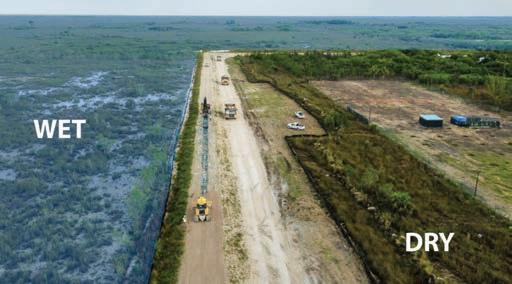
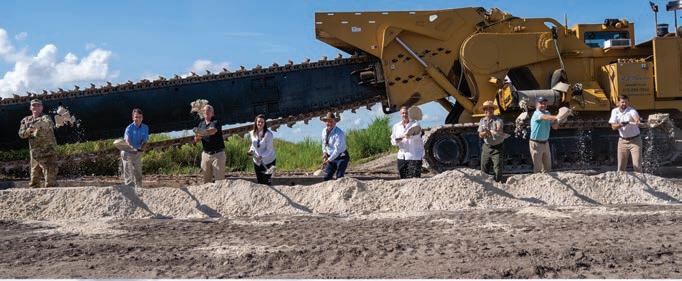
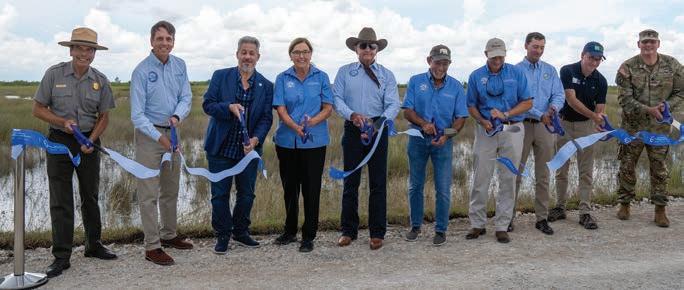

Groundbreaking for the CEPP New Water Seepage Barrier Wall on Aug. 20, 2021. L-R: Former USACE - Jacksonville District Lt. Col. Todd Polk, SFWMD Director Drew Bartlett, Congressman Carlos Gimenez, Lt. Governor Jeanette Nuñez, SFWMD Board Member “Alligator Ron” Bergeron, City of Sweetwater Mayor Jose “Pepe” Diaz, Superintendent of Everglades and Dry Tortugas National Parks Pedro Ramos, Everglades Foundation CEO Eric Eikenberg and Former DEP Southeast District Director Jason Andreotta.
Ribbon Cutting Ceremony for the CEPP New Water Seepage Barrier Wall on April 4, 2024. L-R: USACE - Jacksonville District Maj. Cory Bell, DEP Deputy Secretary Adam Blalock, Superintendent of Everglades and Dry Tortugas National Parks Pedro Ramos, SFWMD Director Drew Bartlett, Sen. Ana Maria Rodriguez, SFWMD Board Member “Alligator Ron” Bergeron, City of Sweetwater Mayor Jose “Pepe” Diaz, SFWMD Board Members Charlette Roman and Cheryl Meads, Miccosukee Tribe of Indians of Florida Chief of Staff Curtis Osceola and Everglades Foundation CEO Eric Eikenberg.
8.5 SMA Seepage Wall - Phase I Ribbon Cutting on Sept. 15, 2022. L-R: Superintendent of Everglades and Dry Tortugas National Parks Pedro Ramos, SFWMD Director Drew Bartlett, City of Sweetwater Mayor Jose “Pepe” Diaz, SFWMD Board Members Charlette Roman, “Alligator Ron” Bergeron and Charlie Martinez, SFWMD Chairman Chauncey Goss, DEP Deputy Secretary Adam Blalock, Everglades Foundation CEO Eric Eikenberg and Former USACE - Jacksonville District Lt. Col. Todd Polk.
CEPP New Water Seepage Barrier Wall Groundbreaking on Dec. 12, 2022. L-R: SFWMD Board Member Ben Butler, Former USACE - Jacksonville District Lt. Col. Todd Polk, SFWMD Board Member “Alligator Ron” Bergeron, SFWMD
Director Drew Bartlett, Superintendent of Everglades and Dry Tortugas National Parks Pedro Ramos, SFWMD Board
Member Charlette Roman, Everglades Foundation CEO Eric Eikenberg and DEP Deputy Secretary Adam Blalock.
2025 SOUTH FLORIDA ENVIRONMENTAL
WATER STORAGE NORTH OF LAKE OKEECHOBEE
The State of Florida continues to be at the forefront of America’s ecosystem restoration efforts and continues to demonstrate historic progress on several key priority projects including the North of Lake Okeechobee Storage Reservoir (LOCAR).
The South Florida Water Management District (SFWMD), as the non-Federal sponsor for CERP, conducted a Feasibility Study for the LOCAR Section 203 Study under the federal Water Resources Development Act (WRDA) of 1986, as amended. The USACE coordinated the National Environmental Policy Act portion of the Feasibility Study and the SFWMD prepared the Environmental Impact Statement (EIS). The Feasibility Study explored opportunities for aboveground water storage north of Lake Okeechobee with an estimated water storage capacity of 200,000 acre-feet. It is approximately 12,500 acres in size. The study area covers a large portion of the Lake Okeechobee Watershed north of Lake Okeechobee and will provide ecological benefits to the lake and the northern estuaries.
The purpose of this reservoir is to store excess water in the northern watersheds and release the excess water at times when it is beneficial for the region. This increased storage capacity will reduce the duration and frequency of both high and low water levels in Lake Okeechobee, which are harmful to Lake Okeechobee’s ecology.
LAKE OKEECHOBEE WATERSHED RESTORATION PROJECT (LOWRP)
The SFWMD continues to implement the Lake Okeechobee Watershed Restoration Project (LOWRP) in accordance with its science plan in addition to supporting aboveground storage opportunities north of Lake Okeechobee.
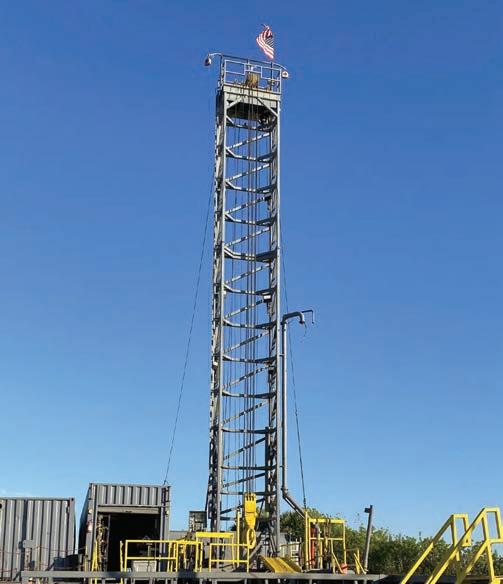
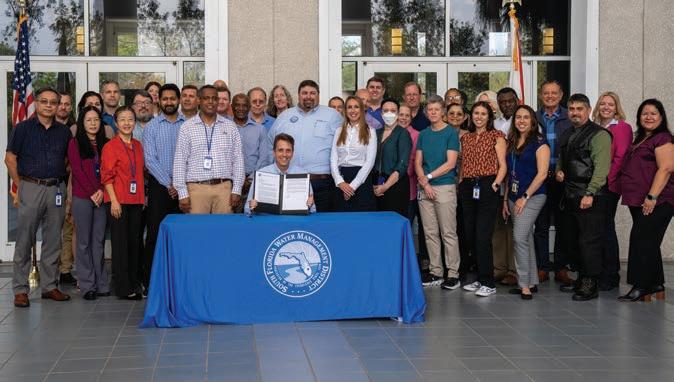
With these improvements to Lake Okeechobee levels, the reservoir will help reduce the likelihood of harmful discharges from Lake Okeechobee to the northern estuaries.
LOCAR BENEFITS INCLUDE:
Increasing water storage in the northern watersheds.
Increasing the availability of water supply for all users.
Reducing the duration and frequency of both high and low water levels in Lake Okeechobee.
Reducing the likelihood of harmful discharges from Lake Okeechobee to the northern estuaries.
Providing ecological benefits to Lake Okeechobee and the northern estuaries.
2024 WATER RESOURCES DEVELOPMENT ACT
The North of Lake Okeechobee Storage Reservoir (LOCAR) and the Western Everglades Restoration Project were authorized in the 2024 Water Resources Development Act.
Both the U.S. House of Representatives and the U.S. Senate passed WRDA 2024 and President Joe Biden signed it into law.
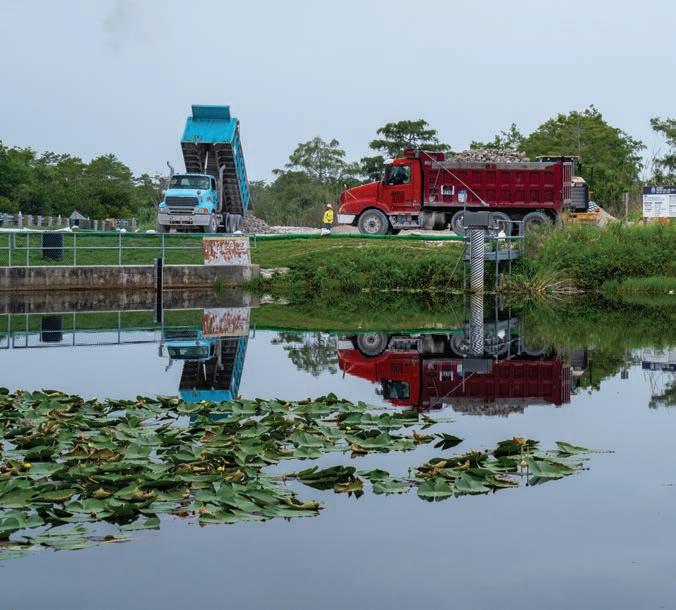
SFWMD C38-S and C38-N drill rigs.
SFWMD Director Drew Bartlett signed the transmittal letter for the North of Lake Okeechobee Storage Reservoir (LOCAR) Section 203 Final Feasibility Study on Feb. 28, 2024.
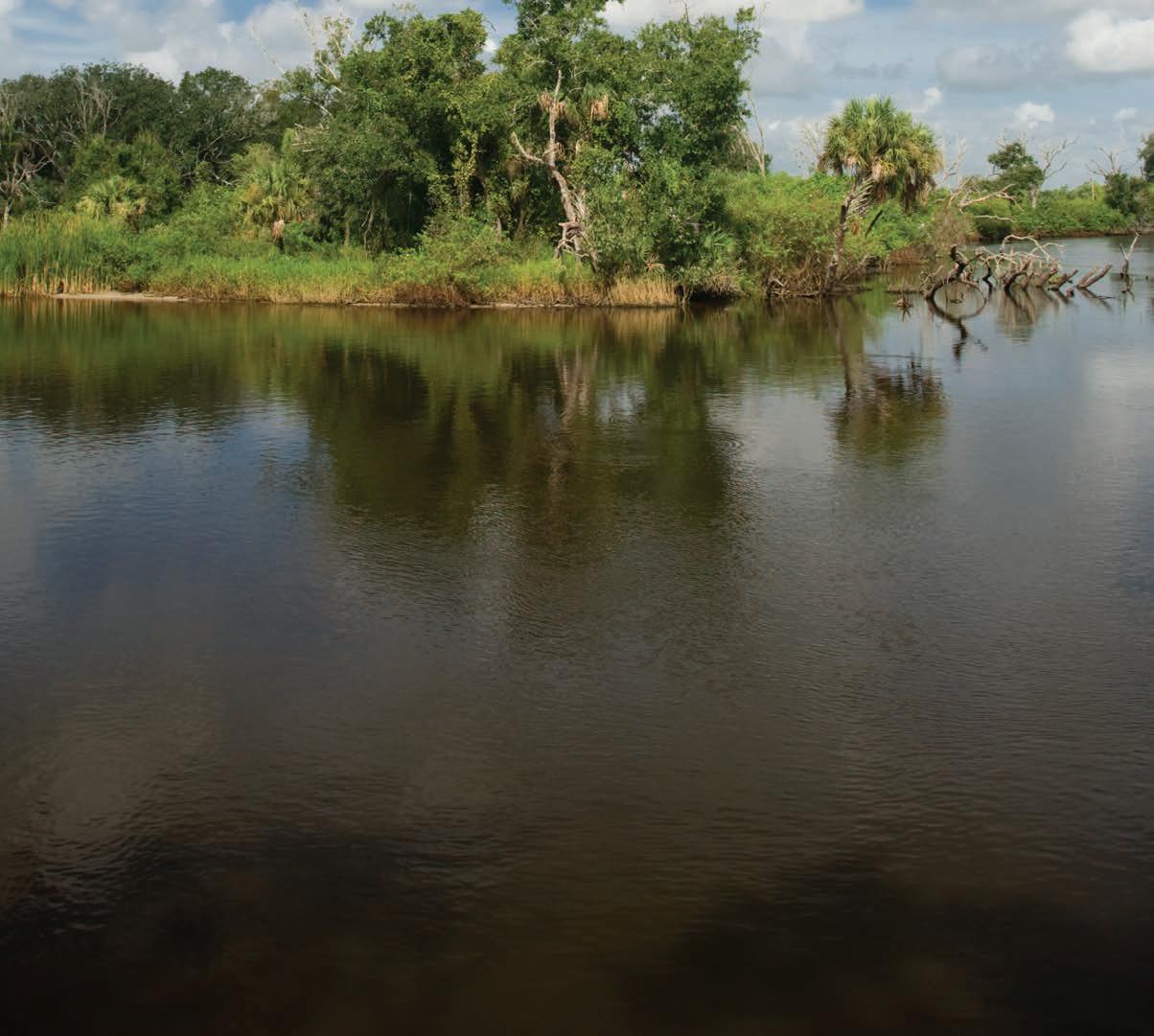
THE KISSIMMEE RIVER RESTORATION PROJECT
Supporting the goals of one of the largest restoration projects in history
Construction on this Kissimmee River Restoration Project was completed in 2021, making it one of the largest successful restoration projects in history. This monumental restoration effort has reestablished the physical form of the Kissimmee River and floodplain, and reestablished flow to more than 40 miles of river channel and intermittent inundation of 25,000 acres of the river’s floodplain.
The Kissimmee River and its Upper Chain of Lakes forms the headwaters of the Everglades, and the Kissimmee River Restoration Project is vital to restoring the Greater Everglades ecosystem.
The historic Kissimmee River once meandered for 103 miles through Central Florida. Its floodplain, reaching up to two miles wide, was inundated for long periods by heavy seasonal rains. Recurring and prolonged flooding impacted local residents and resulted in congressional authorization of the Central and Southern Florida Project, which included channelizing the Kissimmee River and floodplain.
Construction of the C-38 Canal achieved flood reduction benefits, but it also harmed the river-floodplain ecosystem. The decline of the ecosystem spurred federal, state and local partnerships to embark on one of the world’s largest riverine restoration efforts: the Kissimmee River Restoration Project.
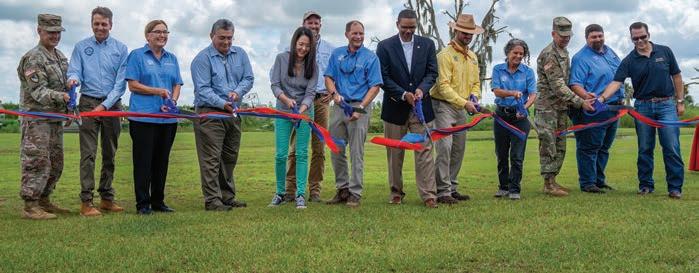
Kissimmee River Restoration Project Ribbon Cutting on July 29, 2021. L-R: Former USACE - Jacksonville District Col. Andrew Kelly, SFWMD Director Drew Bartlett, SFWMD Board Member Charlette Roman, Former Acting Assistant Secretary of the Army for Civil Works Jaime Pinkham, Former U.S. Department of Interior Assistant Secretary for Fish and Wildlife and Parks Shannon Estenoz, SFWMD Water Resources Director Lawrence Glenn, SFWMD Chairman Chauncey Goss, Former DEP Secretary Shawn Hamilton, Former County Coalition Chairperson Karson Turner, Former SFWMD Board Member Jacqui Thurlow-Lippisch, USACE Major General William (Butch) H. Graham, SFWMD Board Member Ben Butler and Rep. Toby Overdorf.
KISSIMMEE RIVER HEADWATERS REVITALIZATION SCHEDULE (HRS)
The completion of construction for the Kissimmee River Restoration Project in 2021 set the stage for gradual implementation of the new HRS, which regulates water levels in the Kissimmee River. The Kissimmee River HRS is the last piece of the Kissimmee River Restoration Project, which was jointly developed and constructed by USACE and the SFWMD over the last 30 years.
The HRS will be implemented in phases to hold more water in Lakes Kissimmee, Cypress and Hatchineha to allow historic flows to the Kissimmee River while maintaining the same level of flood protection.
Intensive monitoring will occur to assess the affects of modifying water levels. Phased updates to the management plan will allow successively higher stages in the Headwaters Lakes (Lakes Kissimmee, Cypress, and Hatchineha) until approximately 2026, when the HRS will be fully implemented.
The objective of the HRS is to provide sufficient water storage to reestablish historical (pre-channelization) flow patterns to the Kissimmee River through the increased flow capacity for the S-65 structure. The higher stages allowed by the schedule are also expected to improve littoral zone habitat in the lakes.
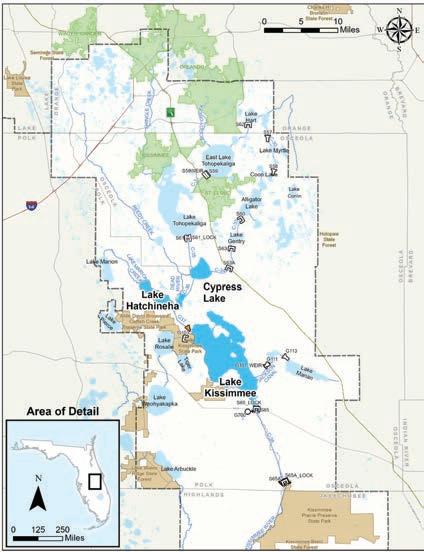
HRS INCREMENT 1 DETAILS:
ss s s s
Increment 1 is the first phase of the HRS. Proposed as a deviation to the Interim Regulation Schedule.
Development started in 2021 and was approved and implemented in August 2024. Increment 1 raises the regulation schedule elevation approximately 0.5 feet higher than the interim regulation schedule in summer and winter.
Increment 1 will remain in effect until a subsequent increment is implemented, or upon implementation of the full Headwaters Revitalization Schedule.
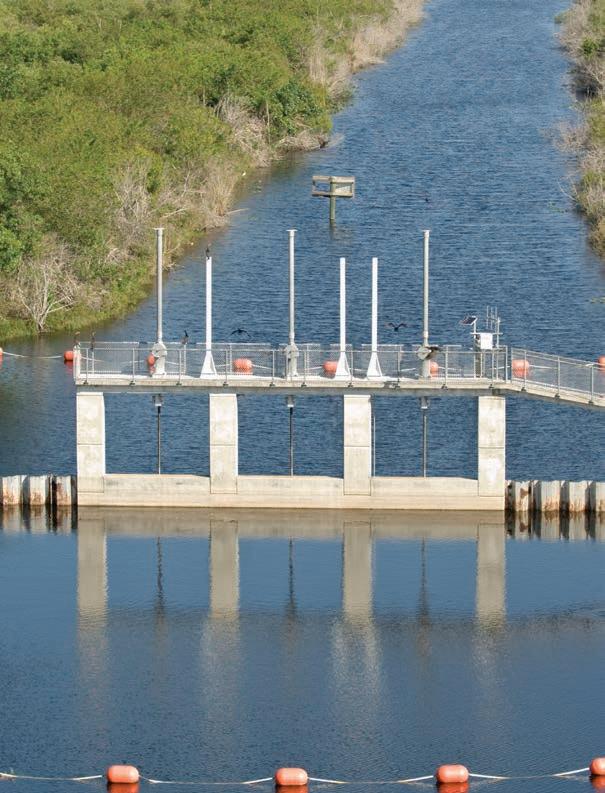
RESILIENCY EFFORTS
Ensuring the resiliency of the region’s water resources and ecosystems is a key component of the SFWMD’s mission.
The SFWMD continues to actively collaborate on resiliency efforts with local, state, federal and tribal partners, non-governmental entities, universities, and citizens throughout Central and Southern Florida to address the impacts of sea level rise, rainfall and flood patterns, and other changing conditions on our natural resources and water management infrastructure. These efforts ensure the SFWMD’s resiliency planning and implementation projects are founded on the best available science and robust technical analyses.
As a key part of its resiliency strategy and through the Flood Protection Level of Service Program, the SFWMD continues assessing the status of its flood control infrastructure and adaption strategies necessary to continue providing flood protection for South Florida and other mission critical services.
The implementation of the SFWMD Sea Level Rise and Flood Resiliency Plan and critical flood infrastructure investments ensures the resiliency of the Central and Southern Florida System.
FLOOD CONTROL INFRASTRUCTURE
Some Flood Control Infrastructure is Already Unable to Operate Under Certain Conditions
Many existing flood control structures rely on gravity to drain communities and move water through canals to the ocean. When the sea level is higher than the canal level, water is unable to drain out through these gravity-driven structures. If water cannot drain, communities will flood.
Infrastructure investments and pump improvements are needed to continue to effectively and efficiently move water away from communities and provide flood protection.
RESILIENCY PROGRAM HIGHLIGHTS
WATER AND CLIMATE RESILIENCE METRICS
These science-based metrics track and document trends in water and climate data to help guide the SFWMD's resiliency planning.
ASSESSING INFRASTRUCTURE NEEDS
The SFWMD is working to advance tools, techniques, and models to support local and regional infrastructure assessments and adaptation planning.
SEA LEVEL RISE AND FLOOD RESILIENCY PLAN
The plan, updated annually, characterizes a comprehensive list of priority resiliency projects with the goal of reducing the risks of flooding, sea level rise, and other climate impacts on water resources, our communities and the environment.
RESILIENCY PROJECTS IMPLEMENTATION
Executing projects that enhance infrastructure to meet current and future conditions, improve storage and conveyance capacity, increase operational flexibility, and enhance coastal wetlands and other ecosystems, along with piloting innovative technologies that protect water resources and the environment.
RESILIENCY COORDINATION FORUM
Promoting regional coordination and partnership opportunities by holding proactive discussions, leveraging technical knowledge and exchanging information, and fostering a constructive environment to discuss tangible asset-level solutions and support decision making on water resource management.
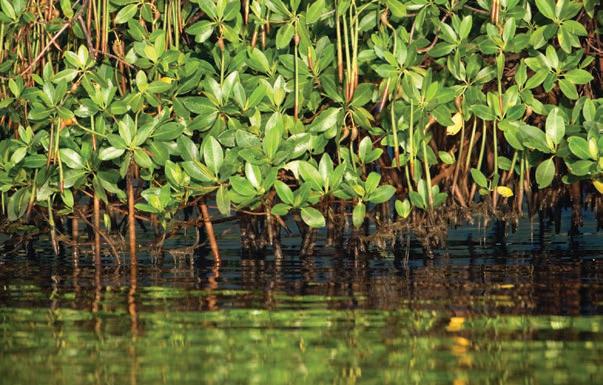
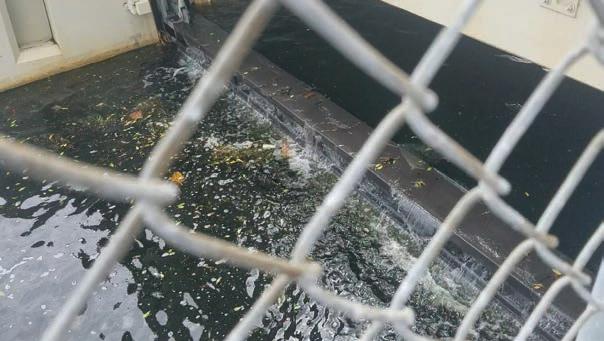
Red Mangroves Along Indian River Lagoon Estuary.
S-340 Structure Gate C-123 on Miami Canal.
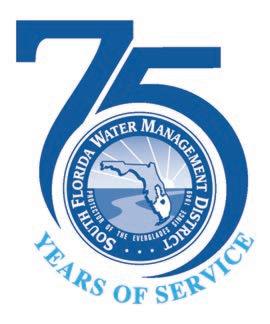
CELEBRATING 75 YEARS OF PUBLIC SERVICE
As the South Florida Water Management District (SFWMD) celebrates its 75th Anniversary this year, we’re highlighting our continued commitment to ensuring the regional flood control and water management system operates smoothly and efficiently to safeguard our water resources – now and for future generations.
The SFWMD operates and maintains one of the largest flood control and water management systems in the world. Central and Southern Florida’s regional system of canals, levees, pump stations and other important water management infrastructure is key to protecting water supplies and providing flood control for over 9 million people throughout the region.
Moving water to meet varying conditions and needs is essential to sustaining Central and Southern Florida's people, economy and our environment.
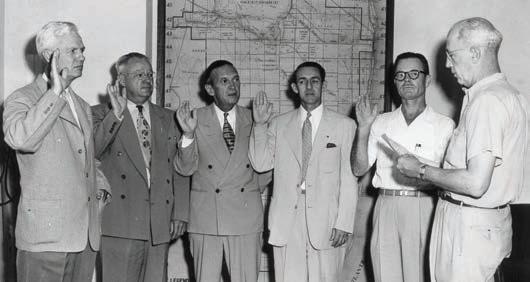
75 YEARS OF PUBLIC SERVICE
75 years after the creation of the Central and Southern Florida Flood Control District, the SFWMD continues to operate and maintain Central and Southern Florida’s regional water management system to effectively manage and safeguard our water resources.
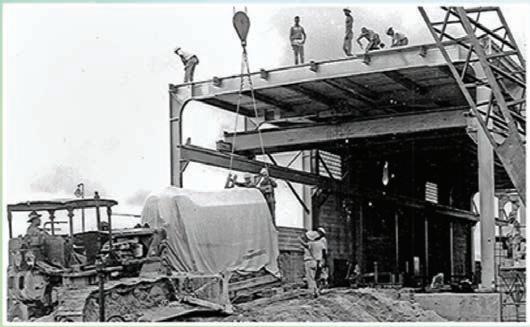
A LOOK BACK
In 1948, the U.S. Congress adopted legislation creating the Central and Southern Florida (C&SF) Project, the largest civil works project in the country. Construction began the next year and continued over 20 years as the U.S. Army Corps of Engineers (USACE) built the massive flood control plumbing system stretching from just south of Orlando to Florida Bay.
On June 2, 1949, under Florida Governor Fuller Warren, the Florida State Legislature created the Central and Southern Florida Flood Control District, the predecessor agency to the SFWMD, to manage the C&SF Project.

Using state-of-the-art technology, SFWMD water managers monitor the weather around the clock to determine the optimal operation of hundreds of control structures located from Orlando to the Florida Keys.
Our dedicated team of employees is working every day to manage and maintain:
2,175+ miles of canals
2,130+ miles of levees/berms
936+ water control structures
620+ project culverts
98 pump stations
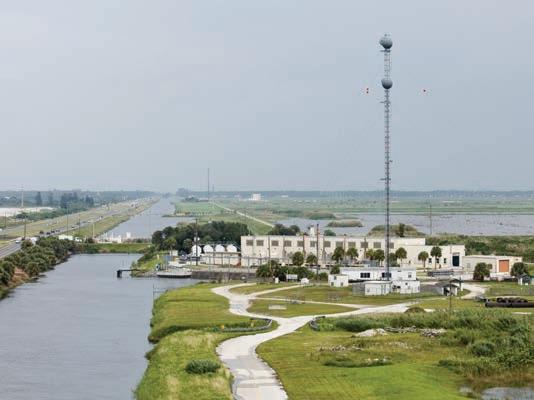
About 3,537 hydrological monitoring stations at more than 687 flow sites, including 201 rain gauges and 22 weather stations.
INVESTING IN THE FUTURE
The SFWMD uses cutting-edge technology and science to assess the status of its infrastructure, prioritize long-term needs, and develop adaptation strategies to help ensure the resiliency of the regional flood control and water management system.
The SFWMD continues to make significant infrastructure adaptation investments to carry out its mission of safeguarding and restoring Central and Southern Florida’s water resources and ecosystems, protecting communities from flooding, and ensuring an adequate water supply for all of South Florida’s needs.
Modern Day S-5A Pump Station.
Moving One of the Engines into the S-5A Pump Station in 1954.
First Governing Board Taking the Oath in 1949.
Modern Day Governing Board Meeting in 2024.

LOXAHATCHEE IMPOUNDMENT LANDSCAPE ASSESSMENT (LILA)
Research Provides A Guide For Tree Island Restoration
MANAGING TREE ISLANDS
Tree mortality tends to occur at higher elevations on tree islands compared to lower elevations. Tree islands that experience more variable and high water level conditions throughout the year tend to have higher ionic concentrations in the groundwater and a greater potential for tree island stability and elevation growth due to a greater potential for calcium carbonate formation in the soils.
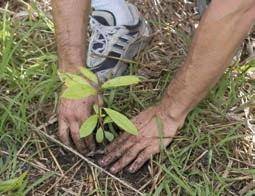
Trees subjected to a rain-driven, unconstrained regime experienced a more natural dry and wet cycle. Results from this study improve selection of species composition and allow for early warning of flooding stress on tree islands. Equally as important, the study results serve as a suitable species guide for restoring degraded tree islands in the Everglades.
STA STUDIES
Restoration Strategies Science
FAUNA STUDY
Fish biomass is much more abundant within the STAs than the downstream Everglades. Biomass varies for all groups of fish over time in the STAs. Small fish and macroinvertebrate abundance are related to submerged aquatic vegetation density. Large fish abundance is related to marsh depth. Capture rate of large fish by electrofishing ranges from 5% (for exotic fish) to 90% (for native fish). Probability excretion by small fish into the water column was similar in magnitude to external probability loads to the STAs. Large fish excretion was an order of magnitude smaller than small fish.
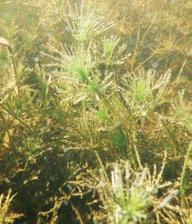
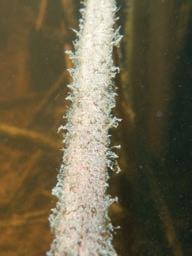
Bioturbation of floc and underlying soils by large fish can result in increased total phosphorus concentrations. Bioturbation may be substantial in outflow regions where fish nesting has occurred. Fish herbivory negatively affects the reestablishment of submerged aquatic vegetation in bare soils. Fish herbivory in established submerged aquatic vegetation areas is minimal.
MANAGING SOIL MICROBIOMES
CAN IMPROVE RESTORATION
Tree physiology and growth are dependent on the interaction between hydrology and the community of microorganisms (or microbiome) composition.
Constructed LILA tree islands accumulate levels of fungal richness and diversity similar to natural islands but lacked many keystone fungi found on natural tree islands that may be important for long-term maintenance of microbiome structure and stability. Microbiomes offer an important avenue for improving restoration efforts as these hidden players are integral to ecosystem health and functioning.
MARL STUDY
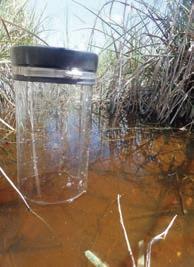
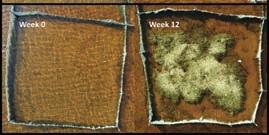
Marl soils of submerged aquatic vegetation regions of STAs are less easily resuspended than organic soils of emergent aquatic vegetation regions of the STAs. Resuspended marl soils can add probability to the water column and reduce probability retention within the STAs. Dryout consolidates and stabilizes marl soils for a short periods of time (less than 12 weeks). Probability flux is greater from dried consolidated marl soils after rehydration compared to non-consolidated soils. Organic material amendments added to dried marl soils had little effect on probability flux and stability after rehydration. Dryout followed by rehydration stimulated submerged aquatic vegetation germination and growth in marl soils within 5 weeks, enhancing stability and reducing overall probability flux.
PERIPHYTON STUDY
Metagenomics (DNA analyses) and metatranscriptomics (RNA analyses) were used to evaluate periphyton (algae, diatoms, bacteria, fungi, and other microbial organisms). Spatial and temporal differences of algal, microbial, and functional gene composition were found between submerged aquatic vegetation (SAV) and emergent aquatic vegetation (EAV). Both SAV and EAV communities metabolize probability forms in different and complementary ways.
A flume study found turbidity increased from Chara beds at low flow velocities. Turbidity increase was short lived as the supply of this periphyton was limited. Results consistent with previous studies that show particulate probability polypropylene reduction as water flow is initiated in a flow way. This study supports current management of mixed SAV/EAV vegetation communities near outflow regions of the flow ways.
EVERGLADES STORMWATER TREATMENT AREAS (STAs)
STAs are large, constructed wetlands with emergent and aquatic plants that remove and store nutrients.
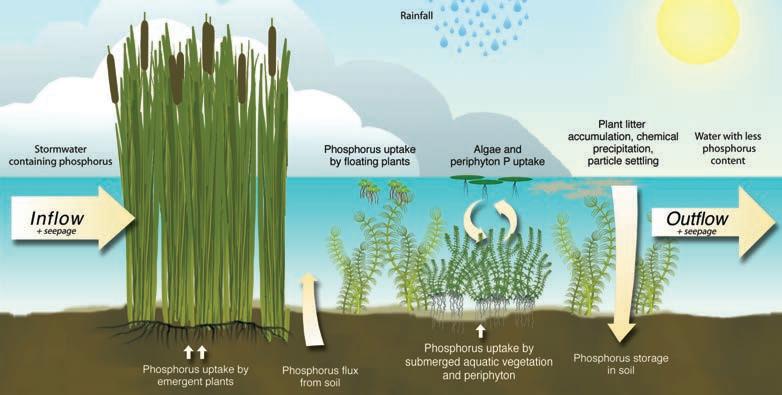
WATER YEAR 2024 PERFORMANCE
In Water Year 2024 (May 1, 2023 to April 30, 2024), the Everglades STAs treated approximately 1.5 million acre-feet of water and retained 152 metric tons of total phosphorus (TP), resulting in an 81% load reduction, and produced an outflow flow-weighted mean concentration (FWMC) of 19 micrograms per liter (µg/L). Approximately 85,000 acre-feet of the inflow volume this water year came from Lake Okeechobee.
The outflow total phosphorus flow-weighted mean concentration and percent inflow total phosphorus load retained are shown in the table above. The consistently good annual treatment performance in STA-3/4 is attributed, in part, to it receiving comparatively low inflow total phosphorus

THE ROLE OF VEGETATION
The plants remove and store nutrients such as phosphorus that are found in stormwater runoff before it is moved out of the STA and into the Everglades. SFWMD has built 62,000 acres of STAs to restore Everglades water quality.
Provides surface for periphyton/ microbial colonization and activity. Provides nutrient storage.
Nutrients also are retained through uptake, settling and burial.
WHY FLORIDA BUILT STAs
The State of Florida has invested in water quality improvements including the construction of STAs to treat water before it reaches the Everglades.
STAs remove excess nutrients in the water, such as fertilizer, through plant growth and accumulation of dead plant material in the soil. These excess nutrients, if not removed, can cause undesirable plants such as cattails to grow in the Everglades, crowding out native wetland plants and degrading the ecosystem.
Nutrient concentrations, particularly phosphorus, were naturally ultra-low in the Everglades. The STAs have dramatically reduced the concentrations of phosphorus in Everglades-bound water.
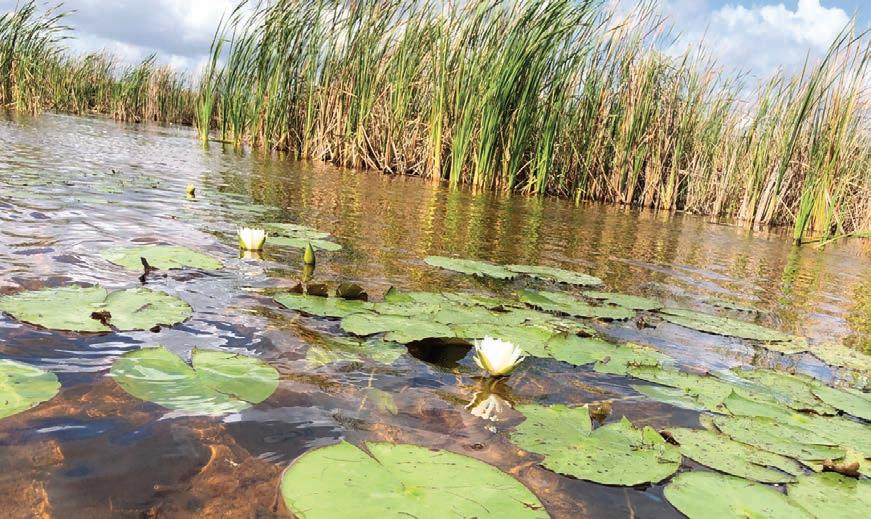
a METRIC TON?
STAs are continually monitored and maintained to maximize the water treatment capacity.
SFWMD has also constructed shallow storage features called flow equalization basins (FEBs) that further optimize the ability of Everglades STAs to treat water.
STA SUCCESSES TO DATE (AS OF
2024)
Treated approximately 27.8 million acre-feet of water or 9.1 trillion gallons. Retained over 3,500 metric tons of total phosphorus.
78% total phosphorus load reduction.
PROTECTING OUR ENVIRONMENT BY MANAGING INVASIVE PLANTS
The effective control of invasive plants is an important part of the SFWMD’s mission and our continued ability to protect Central and Southern Florida’s natural resources.
Invasive plants are damaging to Central and Southern Florida’s ecosystems. They often result in the loss of habitat for native flora and fauna, change how water flows across the landscape, shift natural fire conditions, and degrade public lands. Floating and submerged vegetation can also clog waterways and water control structures that move water for flood protection.
To protect communities from flooding and to preserve our natural ecology, the SFWMD works to manage nuisance and invasive species across Central and Southern Florida. Using an “integrated pest management” or IPM approach includes the following:
Prescribed burns
Hydrologic restoration
Physical (mechanical) removal
Selective herbicide application
Other natural predators (biocontrol) like Lygodium moth
The use of the IPM approach provides better results than any one method could achieve on its own.
INVASIVE PLANT CONTROL IS A BIG PART OF EVERGLADES RESTORATION
The SFWMD has initiated several major restoration projects via removal of invasive plants including the following:
Picayune Strand Restoration Project
Loxahatchee National Wildlife Refuge
Sam Jones - Abiaki Prairie Mitigation Project
The SFWMD has one of the nation’s largest invasive plant management programs. Over 80 species of non-native, invasive plants including Brazilian pepper, melaleuca trees and aquatic vegetation such as hydrilla and water hyacinth. Successfully combating these invasive species is critically important to the SFWMD’s strategic goals on advancing Everglades restoration and improving water quality.
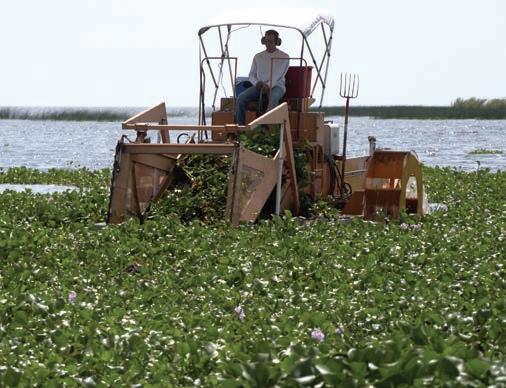
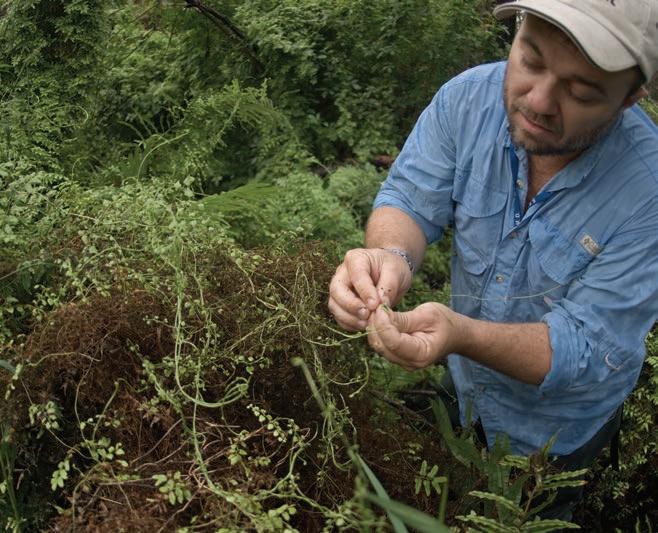
For over 30 years, SFWMD’s melaleuca management program has systemically cleared invasive melaleuca from Lake Okeechobee and the Everglades, and land managers are able to maintain these areas with very low melaleuca presence year after year.
The success of this program is largely attributed to sustained funding, close inter-agency coordination and a lot of dedication – all of which contribute to the sharing of new information and technology, improved regional strategic planning and increased public awareness to maintain and protect our public lands.
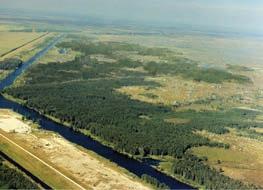
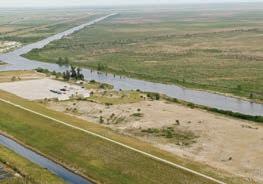
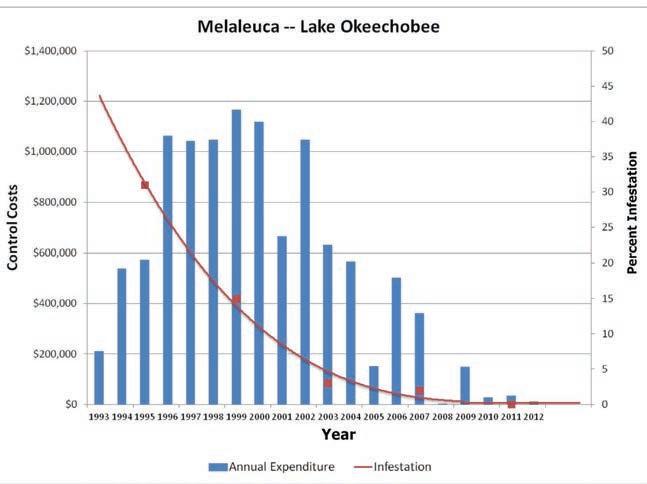
SFWMD scientist studying effects of the Neomusotima Moth Larva on Lygodium (Old World Climbing Fern).
Integrated Pest Management Proves Effective at Managing Invasive Species: A Case Study on Melaleuca
Melaleuca Infested – 1993.
2011.
2025 SOUTH FLORIDA ENVIRONMENTAL

CAPTURED!
TAKING AGGRESSIVE ACTION TO REMOVE INVASIVE BURMESE



PYTHONS
OVER 15,650 BURMESE PYTHONS HAVE BEEN REMOVED FROM THE EVERGLADES AND THE SURROUNDING RURAL AREAS TO DATE
Burmese pythons were first sighted in the Florida Everglades in the 1970s. Their introduction to Florida is a result of the pet trade. Once sought-after commodities, pythons have been sold by breeders as pets or showpieces to exotic animal collectors for decades. They made their way into Florida’s Everglades by accidental or intentional releases by pet owners. Since making their way into the bountiful grounds of the Everglades, these giant constrictors have thrived, assuming a top position on the food web.
Once confined to Everglades National Park and Miami-Dade County, pythons now span across much of South Florida. Pythons exist from Monroe to Palm Beach counties, and from western Broward County to Collier County. The cryptic nature of this species makes their spread difficult to track and hampers the ability of scientists to accurately estimate their population size.
Pythons prey upon a variety of native wildlife including the endangered Key Largo wood rat. Their diet consists mainly of mammals, but also includes birds and reptiles. Through predation, pythons directly influence food webs by reducing native animal populations and robbing predators like panthers, bobcats, and alligators of their primary food sources. In addition to direct predation of native wildlife, pythons also act as vectors of parasites and pathogens which infect native animals.
PYTHON ELIMINATION PROGRAM
The South Florida Water Management District (SFWMD) and the Florida Fish and Wildlife Conservation Commission (FWC) teamed up for a joint Python Elimination Program. Each agency contracts with a team of 50 professional python elimination specialists that track and remove the Burmese pythons year-round.
FLORIDA PYTHON CHALLENGE
More than 850 participants joined the effort to remove invasive Burmese pythons from the Everglades ecosystem during the 2024 Florida Python Challenge, eliminating nearly 200 destructive pythons from public lands in South Florida. Invasive pythons threaten our precious native ecosystem by preying upon the wildlife that lives there, including wading birds, mammals, and other reptiles. Every python that is removed and eliminated is making a difference to protect the Everglades and South Florida’s diverse and native wildlife. Invasive pythons are one of the most destructive and harmful species in America’s Everglades. Their aggressive predation on native wildlife robs panthers, raptors, bobcats, and other native predators of their primary food sources.
The 2024 Florida Python Challenge™ allowed both professional and novice participants the opportunity to join in the effort to remove pythons from public lands. The annual 10-day competition and conservation effort is a partnership between the Florida Fish and Wildlife Conservation Commission (FWC) and the SFWMD that promotes the protection of native wildlife through the removal of Burmese pythons.
How the Public Can Help
Invasive plants and animals are often introduced into our environment by people. Here are four ways you can help: Never dump unwanted pets or plants. Remove invasive plants from your yard and consider landscaping the Florida-Friendly Way.
Understand local laws and regulations for owning plants and animals that may impact our environment. If you come across an invasive species, call 888-Ive-Got1(888-483-4681) or report it using the IveGot1 app.


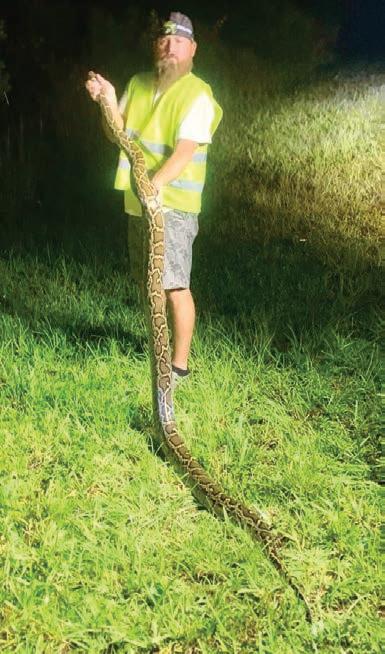
Ronald Kiger, 2024 Python Challenge Ultimate Grand Prize Winner.
NORTHERN EVERGLADES AND ESTUARIES PROTECTION PROGRAM (NEEPP)
NEEPP promotes a comprehensive approach to protect the Lake Okeechobee Watershed, St. Lucie River Watershed and Caloosahatchee River Watershed
Using a combination of research, monitoring, source controls and construction projects, the NEEPP works to restore and protect surface water resources by addressing water quality and storage in the natural system.
The Coordinating Agencies are jointly responsible for implementing NEEPP, each with specific areas of responsibility.
The Florida Department of Environmental Protection (DEP) is the lead on water quality protection measures through the Basin Management Action Plans (BMAPs).
The South Florida Water Management District (SFWMD) is the lead on hydrologic improvements pursuant to the watershed protection programs.
The Florida Department of Agriculture and Consumer Services (FDACS) is the lead on agricultural interim measures, best management practices (BMPs), and other measures.
NEEPP requires the watershed protection programs to improve the quality, quantity, timing and distribution of water in the Northern Everglades ecosystem. The programs are watershed specific and comprised of research and monitoring, development and implementation of BMPs, refinement of existing regulations, and structural and nonstructural projects. They are driven by DEP’s BMAPs and integrated with DEP and FDACS programs to control nutrient sources at the local, subregional, and regional levels.
BASIN MANAGEMENT ACTION PLAN (BMAP) UPDATES SHOW ONGOING PROGRESS
Progress continues on the DEP BMAPs designed to implement nutrient reductions established by the Total Maximum Daily Loads (TMDLs) for the Northern Everglades watersheds (see graph below). The 2023 Statewide Annual Report on Total Maximum Daily Loads, Basin Management Action Plans, Minimum Flows or Minimum Water Levels, and Recovery or Prevention Strategies details progress made through December 31, 2023 on implementation of the Northern Everglades BMAPs. Overall, 283 projects by all entities were completed and 54 projects were underway or planned. The 2024 5-Year Review of the Lake Okeechobee BMAP was also published in January 2025.

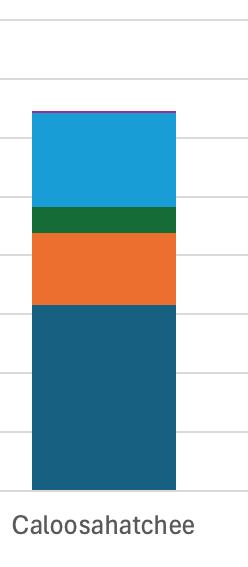
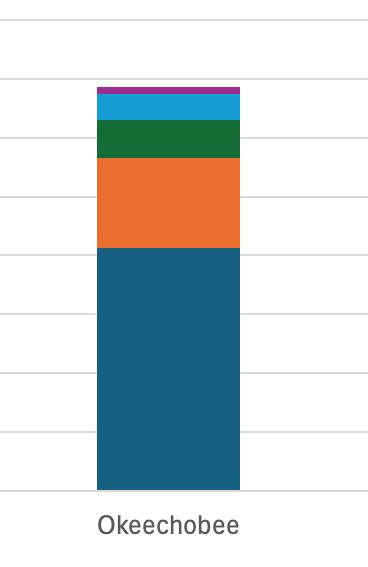
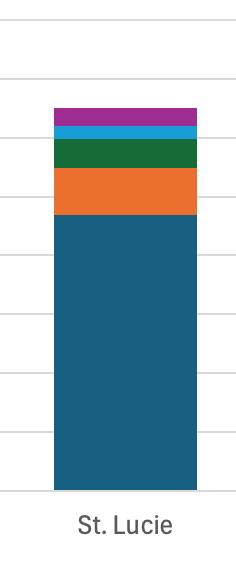
PROTECTION PLAN HIGHLIGHTS FOR THE NORTHERN EVERGLADES WATERSHEDS
Progress
Towards
Water Quality and Storage Goals
A total of 37 SFWMD projects in the Lake Okeechobee Watershed, the St. Lucie River Watershed, and the Caloosahatchee River Watershed were operational in WY2024 that provided approximately:
Over 214,100 acre-feet of storage
62 metric tons of total phosphorus retention
420 metric tons of total nitrogen retention
NEEPP
AND REGIONAL MODELING UPDATE
As part of the 2025 Watershed Protection Plan (WPP) updates, the Northern Everglades WPP modeling was updated by SFWMD. Key findings of this 2025 modeling update, currently known as the Regional Simulation Model, are presented in Volume I, Appendix 8A-1, and includes the NEEPP Model Documentation Report detailing the model structure, inputs, and assumptions.
To date, there has been significant advancement toward NEEPP storage goals, both realized – known as existing conditions baseline (ECB) – and future planned projects (FPP). Overall, this updated modeling effort affirms the existing NEEPP storage goals of 900,000 to 1,300,000 acre-feet in the Lake Okeechobee Watershed, 200,000 acre-feet in the St. Lucie River Watershed, and 400,000 acre-feet in the Caloosahatchee River Watershed (see graph below). It also provides new projections for system performance under the currently recommended Watershed Construction Projects for each of the Northern Everglades watersheds.
NEEPP STORAGE TARGETS
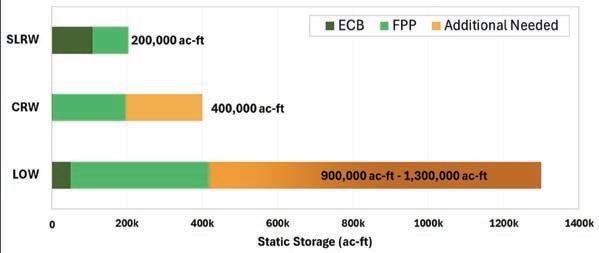
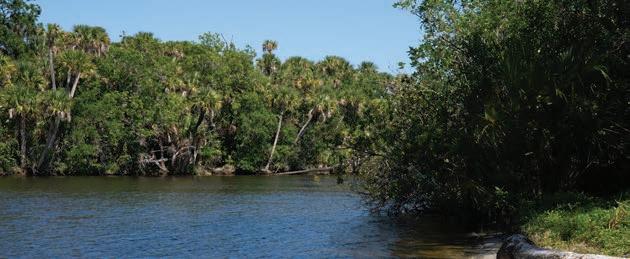
What is an ACRE-FOOT?
An acre-foot is a volume of liquid needed to cover 1 acre of depth of one foot. In the SFER, it is commonly used to express large amounts of water (1 acre-foot = 43,560 cubic feet).
St. Lucie River Watershed.
LAKE OKEECHOBEE WATERSHED PROTECTION PLAN
5-Year Update on Progress Towards Water Quality and Storage Goals
The Florida Department of Environmental Protection (DEP) identified Lake Okeechobee as an impaired water body and, subsequently, established a total phosphorus total maximum daily load (TMDL) of 140 metric tons per year. The 140 metric tons per year of total phosphorus includes 35 metric tons per year estimated atmospheric deposition and 105 metric tons per year allocated to the contributing watershed.
In support of the Northern Everglades Basin Management Action Plans (BMAPs), NEEPP legislation directs the SFWMD, in cooperation with the other Coordinating Agencies (DEP and the Florida Department of Agriculture and Consumer Services) to complete Watershed Protection Plans for each of the three Northern Everglades watersheds. These plans are science-driven plans to improve the quality, quantity, timing, and distribution of surface water in the Northern Everglades ecosystems.
Total flow into Lake Okeechobee was 2.11 million acre-feet in WY2024, approximately 9% lower than the 25-year average of 2.31 million acre-feet per year. Total phosphorus loading into Lake Okeechobee was 386 tons; approximately 12% lower than WY2023, bringing the 5-year average to 390 metric tons per year. Total nitrogen loading into Lake Okeechobee was 5,287 tons; approximately 6% lower than WY2023, bringing the 5-year average to 5,166 metric tons per year.
TOTAL PHOSPHORUS (TP) LOADING
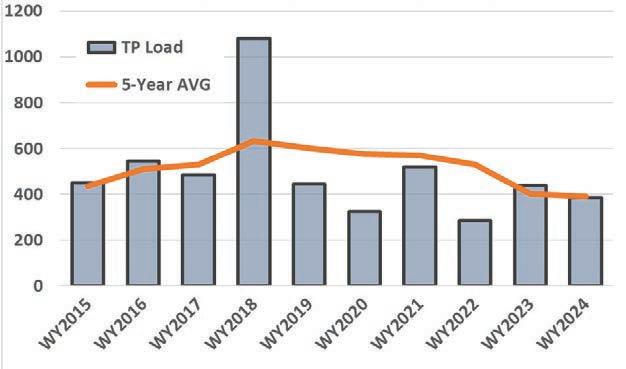
LOOKING FORWARD
In FY2024, four new projects in the Lake Okeechobee Watershed began operations. Collectively, these projects are estimated to deliver 6,800 acre-feet of storage and 10.2 metric tons of total phosphorus retention.
In addition, the SFWMD currently has six projects in the planning, design and construction phases in the Lake Okeechobee Watershed. These projects are planned to deliver an estimated 217,000 acre-feet of storage and 25 metric tons of total phosphorus retention once fully implemented.
As part of regional efforts, progress also continues on the Lake Okeechobee Watershed Restoration Project (LOWRP), North of Lake Okeechobee Storage Reservoir (LOCAR), and Kissimmee River Headwater Revitalization Schedule to bring additional benefits to the Lake Okeechobee Watershed.
In FY2025, planned in-lake projects include turbidity assessments and building predictive models for SAV and wading bird nesting. The SFWMD will continue to seek opportunities to integrate operations for storage and treatment between dispersed water management and regional projects.
The SFWMD will also prioritize implementation of new projects in the Upper and Lower Kissimmee Basins to provide water storage and nutrient reduction in the Lake Okeechobee Watershed. In addition, the SFWMD will continue to implement the expanded monitoring network and will use information from assessments to inform decision making for future projects and as guidance for project operations.
PROTECTING THE LAKE OKEECHOBEE WATERSHED
The Northern Everglades and Estuaries Protection Program (NEEPP) promotes a comprehensive approach to protect the Lake Okeechobee Watershed. 23 Coordinating Agency projects in the Lake Okeechobee Watershed were operational in WY2024 and provided approximately:
More than 53,000 acres of hydrated wetlands ssss
Over 85,000 acre-feet of storage
More than 29 metric tons of total phosphorus retention
More than 182 metric tons of total nitrogen retention
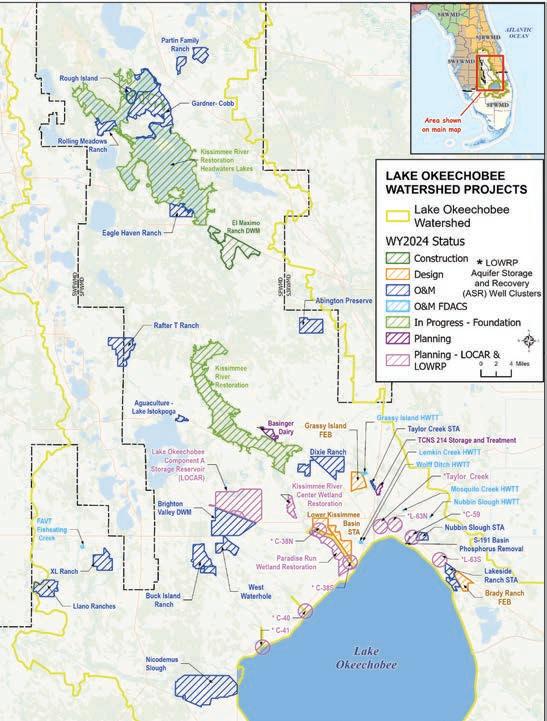
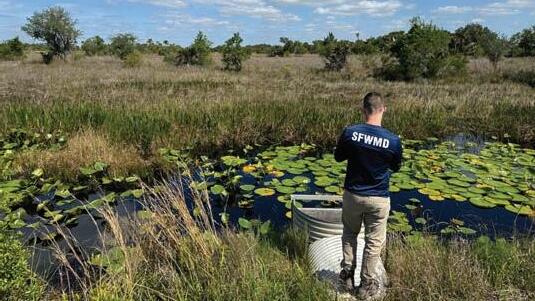
Coordinating agency projects in the Lake Okeechobee Watershed.
Abington Preserve Project Monitoring, Lake Okeechobee Watershed.
2025 SOUTH FLORIDA ENVIRONMENTAL REPORT – Highlights
ST. LUCIE RIVER WATERSHED PROTECTION PLAN
5-Year Update on Progress Towards Water Quality and Storage Goals
The Florida Department of Environmental Protection (DEP) identified the St. Lucie Estuary as an impaired water body and, subsequently, established total maximum daily loads (TMDLs) that set concentration targets of 0.72 milligrams per liter of total nitrogen and 81 micrograms per liter of total phosphorus as measured at the Roosevelt Bridge compliance point in the St. Lucie Estuary. The nutrient TMDLs do not specify a compliance calculation; however, the St. Lucie River and Estuary Basin Management Action Plans (BMAPs) calculates compliance using a 5-year rolling average of total nitrogen and total phosphorus concentration data from the Roosevelt Bridge. In support of the Northern Everglades BMAPs, NEEPP legislation directs the SFWMD, in cooperation with the other Coordinating Agencies (DEP and the Florida Department of Agriculture and Consumer Services) to complete Watershed Protection Plans for each of the three Northern Everglades watersheds. These plans are science-driven plans to improve the quality, quantity, timing, and distribution of surface water in the Northern Everglades ecosystems.
The St. Lucie River Watershed (SLRW) total nitrogen loading was 157 metric tons in WY2024; approximately 19% lower than WY2023, bringing the 5-year average to 178 metric tons per year.
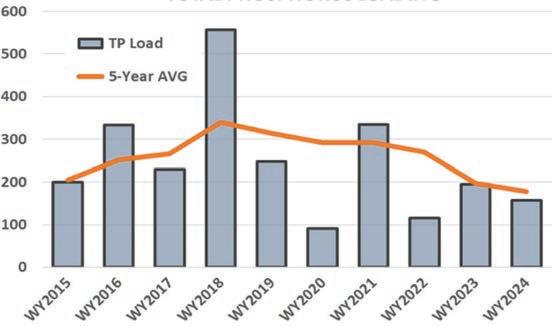
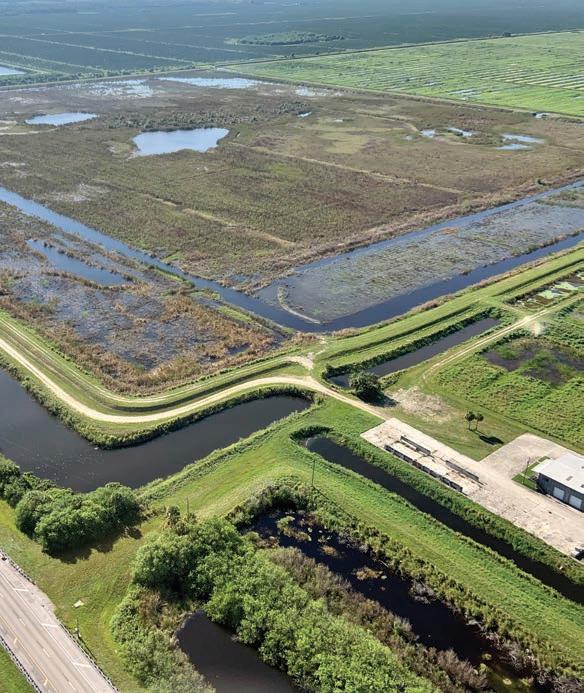
PROTECTING THE ST. LUCIE RIVER WATERSHED
The Northern Everglades and Estuaries Protection Program (NEEPP) promotes a comprehensive approach to protect the St. Lucie River Watershed. Twelve Coordinating Agency projects in the St. Lucie River Watershed were operational in WY2024 and provided approximately:
Over 103,000 acre-feet of storage
More than 24 metric tons of total phosphorus retention
More than 172 metric tons of total nitrogen retention
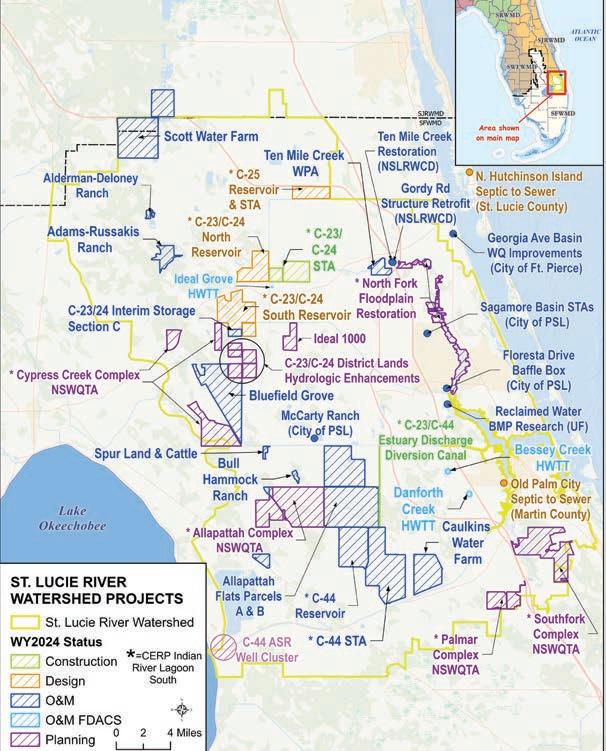
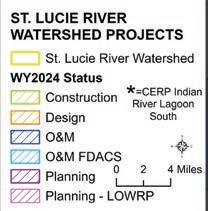
LOOKING FORWARD
The SFWMD currently has 11 projects in planning, design, or under construction, which promise to deliver an estimated 142,535 acre-feet per year of static storage once fully implemented. When the last planned regional projects, the IRL-S C-23/C-24 North and South Reservoirs and STA projects, are in full operation, the planning storage target of 200,000 acre-feet per year for the St. Lucie River Watershed is expected to be met. The SFWMD will continue to seek opportunities to integrate operations for storage and treatment between dispersed water management and regional projects. In addition, the SFWMD will continue to implement the expanded monitoring network, which helps inform the St. Lucie River Watershed Construction Project.
TOTAL PHOSPHORUS (TP) LOADING
Coordinating agency projects in the St. Lucie River Watershed.
Scott Water Farm Aerial, St. Lucie River Watershed.
CALOOSAHATCHEE RIVER WATERSHED PROTECTION PLAN
5-Year Update on Progress Towards Water Quality and Storage Goals
The Florida Department of Environmental Protection (DEP) identified the Caloosahatchee Estuary as impaired for dissolved oxygen and nutrients in 2005 and, subsequently, established a total nitrogen total maximum daily load (TMDL) in 2009. In 2019, DEP also adopted TMDLs for five tributaries (S-4 Basin, C-19 Canal, Lake Hicpochee, Long Hammock Creek, and Townsend Canal), which were subsequently incorporated into the updated Caloosahatchee River and Estuary Basin Management Action Plan (BMAP) in February 2020. The total nitrogen BMAP compliance load for the Caloosahatchee Estuary is 1,383 metric tons per year.
In support of the Northern Everglades BMAPs, NEEPP legislation directs the SFWMD, in cooperation with the other Coordinating Agencies (DEP and the Florida Department of Agriculture and Consumer Services) to complete Watershed Protection Plans for each of the three Northern Everglades watersheds. These plans are science-driven plans to improve the quality, quantity, timing, and distribution of surface water in the Northern Everglades ecosystems.
The Caloosahatchee River Watershed (CRW) total nitrogen loading was 2,279 metric tons in WY2024; approximately 1% lower than WY2023 and bringing the 5-year average to 2,190 metric tons per year. The BMAP compliance load for total nitrogen is 1,383 metric tons per year.
Coordinating agency projects in the Caloosahatchee River Watershed.
PROTECTING THE CALOOSAHATCHEE RIVER WATERSHED
The Northern Everglades and Estuaries Protection Program (NEEPP) promotes a comprehensive approach to protect the Caloosahatchee River Watershed. Five Coordinating Agency projects in the Caloosahatchee River Watershed were operational in WY2024 and provided approximately:
More than 65 metric tons of total nitrogen retention sss
Over 25,000 acre-feet of storage
More than seven metric tons of total phosphorus retention
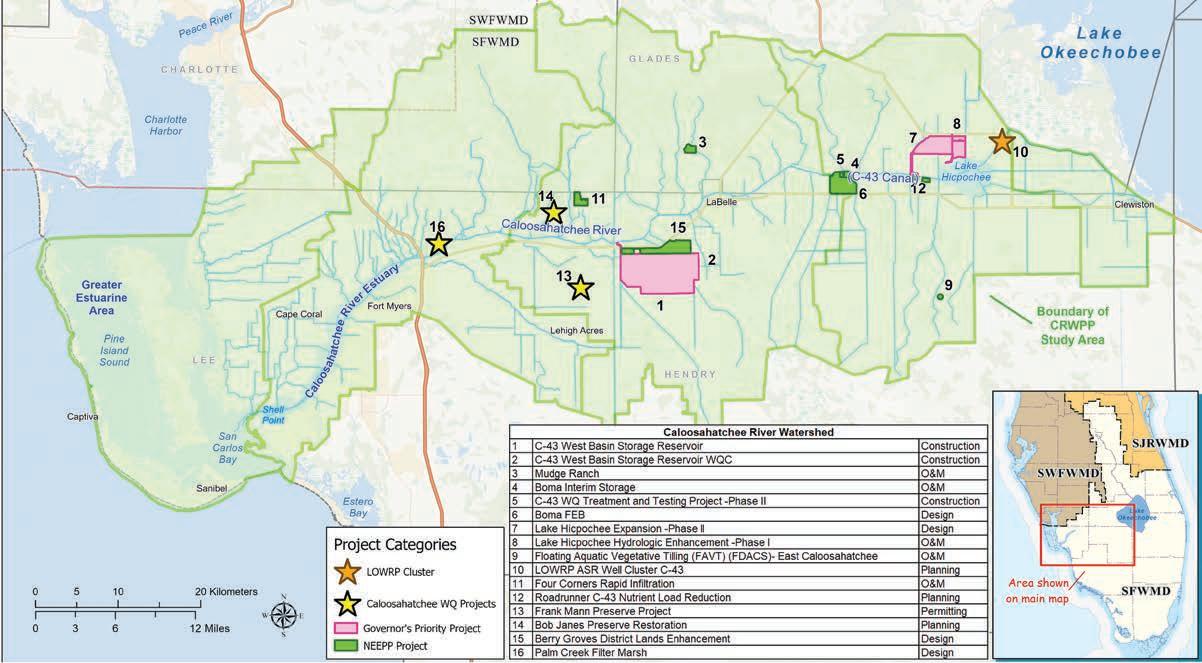
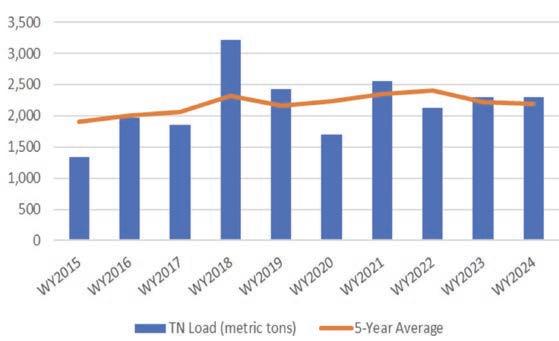
LOOKING FORWARD
The SFWMD currently has 11 projects in the planning, design, and construction phases in the Caloosahatchee River Watershed. Five of these projects will provide 215,519 ac-ft/yr of storage; the remaining six projects are focused on nutrient reduction. Approximately 205,000 acre-feet of additional static storage is needed in the Caloosahatchee River Watershed to reach the 400,000 acre-feet static storage target. New projects should be prioritized in the West or East Caloosahatchee basins to provide water storage and nutrient reduction benefits.
The SFWMD will continue to seek opportunities to integrate operations for storage and treatment between dispersed water management and regional projects. In addition, the SFWMD will continue to implement the expanded monitoring network and use information from detailed assessments and results from the trend analyses to inform decision making for future projects and as guidance for project planning.
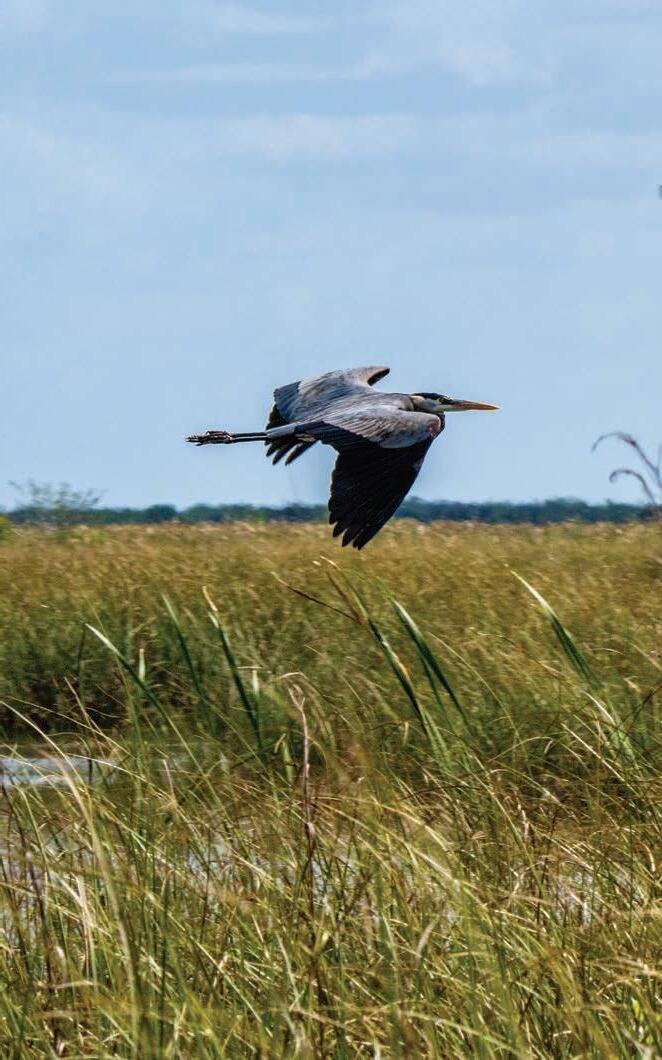
Ron DeSantis, Governor
SFWMD Governing Board
Chauncey Goss, Chairman
Scott Wagner, Vice Chairman
Ron Bergeron Sr.
Ben Butler
Charlie E. Martinez
Cheryl Meads
Charlette Roman
Jay Steinle
Alexis A. Lambert, Secretary
Florida Department of Environmental Protection
SFWMD Executive Management
Drew Bartlett, Executive Director
John Mitnik, Asst. Executive Director & Chief Engineer
Jennifer Smith, Chief of Staff
Jill Creech, Regulation Director
REQUIRED REPORTING FULFILLED BY 2025 SFER
The Florida Statutes (F.S.) contain specific reporting requirements that the SFER fulfills.
Consolidated Water Management District Annual Report
373.036(7), F.S., requires a consolidated report on the management of water resources be submitted annually. The 2025 SFER fulfills this requirement for SFWMD.
Volume I
• Appendix 1-2 provides the Everglades restoration report.
• Appendix 1-3 provides the Everglades Trust Fund expenditure report.
• Chapters 3, 4, 5A, 5B, 5C, 6, and 7 and associated appendices provide an update on Everglades progress.
• Chapters 8A, 8B, 8C, and 8D and associated appendices provide the Northern Everglades and Estuaries Protection Program Annual Progress Report and 5-Year Watershed Protection Plan Updates.
Volume II provides an annual update on the project status during Fiscal Year 2024 and planning for Fiscal Year 2025 for 10 annual reports required of all water management districts.
Volume III of the 2025 SFER provides an annual update on environmental restoration projects to comply with permits issued by DEP. Currently, annual updates are provided for seven projects under construction, 17 projects operating, and four projects operating that also had a phase or component under construction during the water year.
Lucine Dadrian, Engineering, Construction & Modeling Director
Maricruz Fincher, General Counsel
Lawrence Glenn, Water Resources Director
Candida Heater, Administrative Services Director
Lisa Koehler, Big Cypress Basin Administrator
Dr. Carolina Maran, Chief of District Resiliency
Jill Margolius, Communications Director
Akin Owosina, Chief Information Officer
Libby Pigman, External Affairs Director
Jennifer Reynolds, Ecosystem Restoration Director
Rich Virgil, Field Operations Director
Learn more about Everglades restoration projects in South Florida by signing up for the District’s emails. Visit SFWMD.gov and click on “Subscribe for Email Updates.” Connect with us on Facebook, X, Instagram, LinkedIn and YouTube.
FL 33406 SFWMD.gov
Blue Heron at Everglades National Park.
